Star Trek: Strange New Worlds: Augments, Illyrians and the Eugenics Wars
Why first officer Una Chin-Riley was on trial, and how it links all the way back to Khan Noonien Singh.

Warning: Spoilers ahead if you haven't watched "Star Trek: Strange New Worlds" season 2, episode 2, " Ad Astra per Aspera ".
From original series two-parter "The Menagerie" to "The Next Generation" classic "The Measure of a Man", "Star Trek" has always loved a courtroom drama. "Ad Astra per Aspera" continues the tradition, as USS Enterprise first officer Una Chin-Riley (aka Number One) goes on trial.
Her crime? Nothing more than being an Illyrian, a species whose penchant for genetic modification puts them at odds with Federation laws preventing anyone from tinkering around with their DNA.
Una's predicament has its roots in the story of the infamously wrathful Khan Noonien Singh, and also ties into plotlines explored in "Deep Space Nine", "Enterprise" and "Picard". It's also certain to have further implications for "Strange New Worlds," so here's everything you need to know about Augments, Illyrians and the Eugenics Wars.

Why is Una on trial in "Strange New Worlds" season 2?

Simply because of who she is and where she comes from.
In season 1 episode "Ghosts of Illyria " confirmed that the USS Enterprise's highly respected first officer is an Illyrian, a species whose use of genetic modifications contravenes long-standing Federation laws. These rules would have prevented her from serving in Starfleet, so she's kept her heritage hidden throughout her career.
Although Captain Pike opted to keep Number One's secret when he learned the truth about her origins origins, someone else spilled the beans, leading to Una's arrest in season 1 finale 'A Quality of Mercy '.
During the trial, it was revealed that it was actually Una who'd reported herself to the authorities in the hope that her case might help the blinkered Starfleet authorities understand Illyrians a better. She also wanted her crew to know her for who she really was, and to finally feel safe. Her counsel, Neera Ketoul (a fellow Illyrian), successfully argued that Pike was effectively granting Una asylum from persecution by allowing her to remain on the Enterprise, and the charges against her were dropped.

Watch Star Trek: Strange New Worlds on Paramount+:
<a href="https://paramountplus.qflm.net/c/221109/175360/3065?subId1=hawk-custom-tracking&sharedId=hawk&u=https%3A%2F%2Fwww.paramountplus.com%2Faccount%2Fsignup%2Fpickplan" data-link-merchant="paramountplus.com"" target="_blank" rel="nofollow"> Essential (ads) - $4.99/mo or $49.99/yr
<a href="https://paramountplus.qflm.net/c/221109/175360/3065?subId1=hawk-custom-tracking&sharedId=hawk&u=https%3A%2F%2Fwww.paramountplus.com%2Faccount%2Fsignup%2Fpickplan" data-link-merchant="paramountplus.com"" data-link-merchant="paramountplus.com"" target="_blank" rel="nofollow"> Premium (no ads) - $9.99/mo or $99.99/yr
What is an Illyrian?
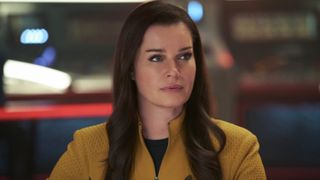
Although Una looks human, Illyrians are a different species entirely, hailing from the Delphic Expanse that was also home to "Star Trek: Enterprise" antagonists the Xindi.
Rather than trying to adapt new worlds to suit their needs, the Illyrians use genetic modification techniques to adapt their bodies to new, often hostile environments – Una's augmentations give her superhuman healing abilities, as well as the ability to literally light up a room.
This penchant for fiddling around with DNA means that their appearance can vary greatly, ranging from the human-like Una, to subtly webbed hands and feet, and the sort of lumpy-foreheaded alien look that's a mainstay of the franchise.
Have we always known that Una is an Illyrian?
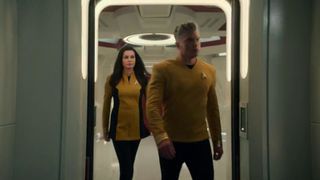
Number One’s first appearance in original "Star Trek" pilot "The Cage" (made in 1965) didn't tell us much (if anything) about her backstory, and there was little to make us suspect she was an alien – indeed, back then the ship's extra-terrestrial quotient effectively consisted of Mr Spock.
However, legendary "Trek" writer DC Fontana did allude to Number One's origins in non-canonical 1989 novel "Vulcan's Glory", where Pike explained that, "Some officers have a difficult time dealing with the fact that she is a genetically perfect being. On her planet, Illyria, excellence is the only criterion that is accepted."
This relatively obscure piece of "Trek" lore has subsequently been reinvented and retconned into official canon.
Why does Starfleet have an issue with Illyrians?
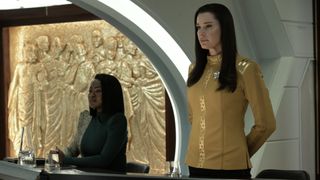
It's not so much the Illyrian people as their penchant for genetic modification, a practice that was made illegal in the wake of the Eugenics Wars that ravaged Earth in the late 20th century and early 21st century.
What were the Eugenics Wars?
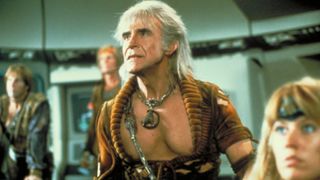
When a group of 20th century scientists successfully engineered a group of men and women who were stronger, faster and more intelligent than your average human, they didn't account for one important detail – these so-called Augments had a massive superiority complex that resulted in an unstoppable desire to conquer and subjugate ordinary homo sapiens. The most famous/infamous of these superhumans, a certain Khan Noonien Singh, came to rule a quarter of the Earth, across Asia and the Middle East.
"Trek" history is a little fuzzy on the subject of whether the subsequent Eugenics Wars were fought between the Augments themselves, or by ordinary humans looking to overthrow their GM overlords. Either way, we do know that millions of people died, and that much of the planet was laid to waste in a conflict that subsequently escalated into a fully blown World War III.
With Augments blamed and ostracized for the near-destruction of Earth, the authorities moved to ban all genetic engineering on humans – a resolution that remained in place for centuries.
When exactly did the Eugenics Wars take place?
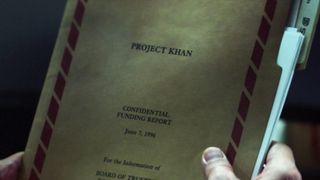
That's a good question. While various "Star Trek" movies and TV shows have alluded to the 21st century being a post-apocalyptic wasteland – and Khan's first appearance in original series episode "Space Seed" dated the Eugenics Wars between 1992-96 – this doesn't tally with "Star Trek: Picard" season 2's extended stay in a very normal 2024 or, indeed, the real world.
But we wonder if the "Trek" chronology might be going through a bit of subtle retconning to make the timeline a little more plausible. Data's "ancestor" Adam Soong pulling out a file labelled "Project Khan" (dated 1996) in the "Picard" season 2 finale certainly suggests Khan could have been born later than we originally thought – unless, of course, the file refers to a plan to replicate a whole new generation of superbeings from Khan's "superior" DNA.
And tweaks like this seem entirely justified as the franchise evolves – as regular ’90s scripter Ronald D Moore put it to Cinefantastique, "What looked like the distant future in 1967 [when 'Space Seed' was broadcast'] is not so distant any more. I don't blame them for not having the foresight to see that in 30 years this would be important in the series."
Are there any other Augments in "Star Trek" lore?
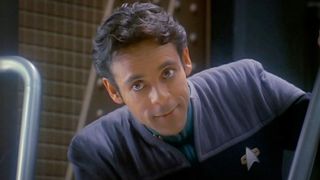
"Trek" has explored the implications of genetic manipulation on several occasions. The most famous example was arguably "Deep Space Nine" medic Dr Julian Bashir, who was shocked to learn that his father had played around with his DNA when he was a kid, with the aim of making him less of a disappointment. While Bashir Sr was never going to win dad of the year, the augmentations to his boy resulted in enhanced mental agility, super-fast reflexes and improved hearing. Despite the Federation's ban on such modifications, Bashir was allowed to remain in Starfleet when his dad agreed to go to prison for his crimes.
Related: Best Star Trek Deep Space Nine Episodes
"Enterprise" also ventured into GM territory, with a plot line about another of Data's ancestors, Arik Soong, set out to prove that Augments wouldn't automatically grow up to be bad 'uns like Khan.
Soong's work was later adapted by Klingons looking to make Augments of their own. Their plan backfired, however, proving lethal until Dr. Phlox engineered a cure that – conveniently for overall continuity – gave a group of Klingons the smooth-foreheaded appearance they had in the era of the original series. When Worf told his confused DS9 crewmates "We do not discuss it with outsiders" in classic flashback episode "Trials and Tribble-ations", this anomaly was what he was talking about.
And Una's shipmate, La'an Noonien Singh, is a descendant of Khan. She lives in fear that genetic modifications may suddenly manifest themselves, making her a danger to the Enterprise crew.
Join our Space Forums to keep talking space on the latest missions, night sky and more! And if you have a news tip, correction or comment, let us know at: [email protected].
Get the Space.com Newsletter
Breaking space news, the latest updates on rocket launches, skywatching events and more!
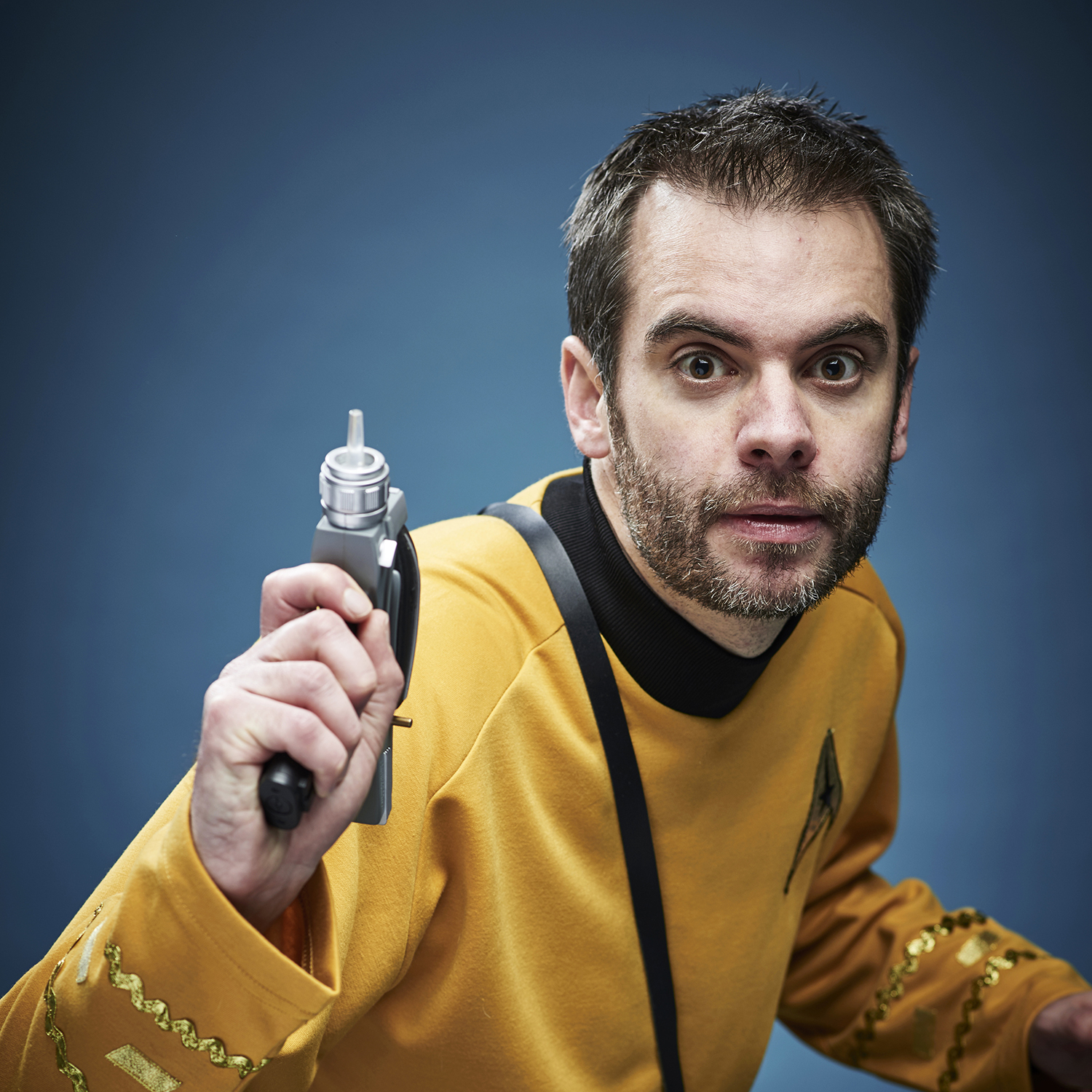
Richard's love affair with outer space started when he saw the original "Star Wars" on TV aged four, and he spent much of the ’90s watching "Star Trek”, "Babylon 5” and “The X-Files" with his mum. After studying physics at university, he became a journalist, swapped science fact for science fiction, and hit the jackpot when he joined the team at SFX, the UK's biggest sci-fi and fantasy magazine. He liked it so much he stayed there for 12 years, four of them as editor.
He's since gone freelance and passes his time writing about "Star Wars", "Star Trek" and superheroes for the likes of SFX, Total Film, TechRadar and GamesRadar+. He has met five Doctors, two Starfleet captains and one Luke Skywalker, and once sat in the cockpit of "Red Dwarf"'s Starbug.
'Star Trek: Discovery' season 5 episode 3 'Jinaal' is a slow but steady affair
This Week In Space podcast: Episode 106 — Space Potpourri!
Sweden becomes 38th country to sign NASA's Artemis Accords for moon exploration
- Atlan0001 Star trek's 'Augmentee' territory = Star Wars' 'Jedi / Sith' territory. Reply
- View All 1 Comment
Most Popular
- 2 Ingenuity team says goodbye to pioneering Mars helicopter
- 3 Boom's XB-1 test plane gets FAA green light for supersonic flight
- 4 Saturn's 'Death Star' moon Mimas may have gotten huge buried ocean from ringed planet's powerful pull
- 5 Mysterious dark matter may leave clues in 'strings of pearls' trailing our galaxy

Hi, what are you looking for?
TREKNEWS.NET | Your daily dose of Star Trek news and opinion
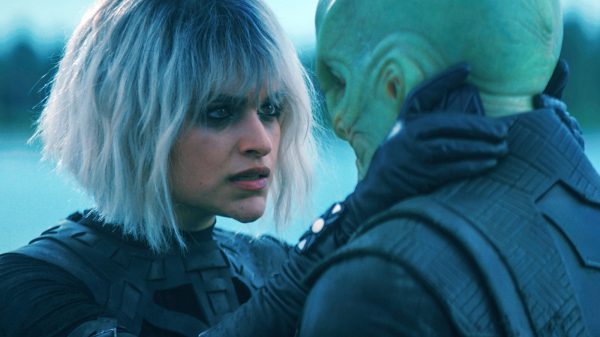
New photos from Star Trek: Discovery Season 5 Episode 4 “Face the Strange”
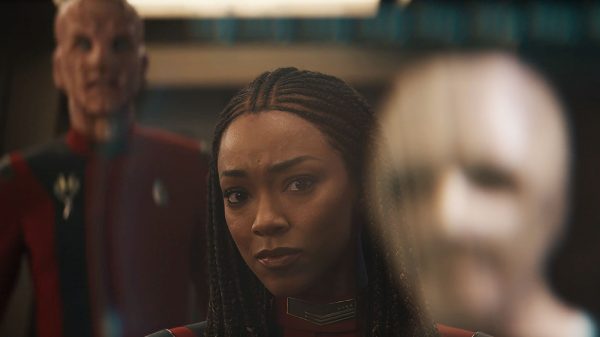
Star Trek: Discovery “Under the Twin Moons” Review: Clues among the moons
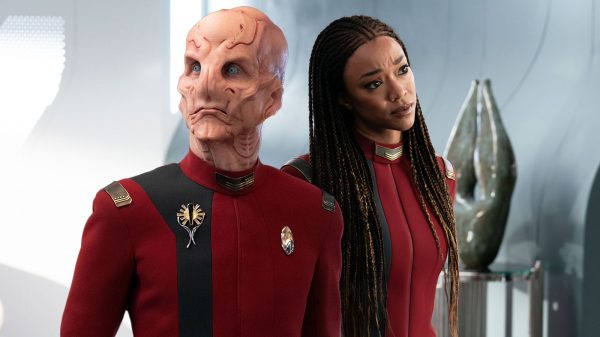
New photos from the first two episodes of Star Trek: Discovery season 5
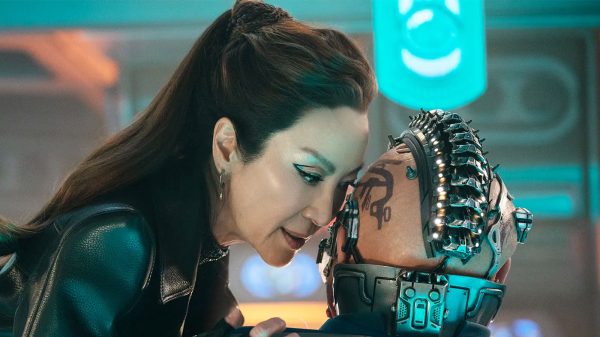
First Photo from Star Trek: Section 31 revealed, legacy character confirmed
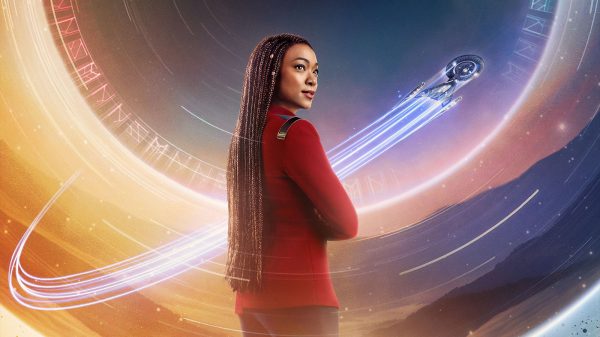
New Star Trek: Discovery posters revealed ahead of final season premiere
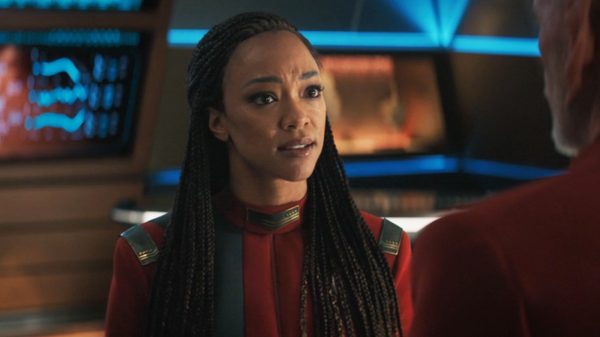
Star Trek: Discovery “Face the Strange” Review: Embarking on a Temporal Odyssey
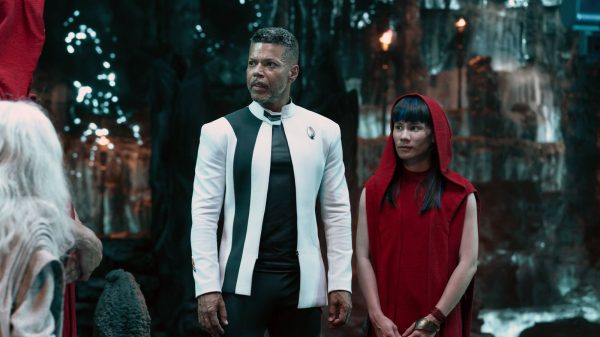
Star Trek: Discovery “Jinaal” Review: One step forward, two steps back

Star Trek: Picard — Firewall Review: The Renaissance of Seven of Nine
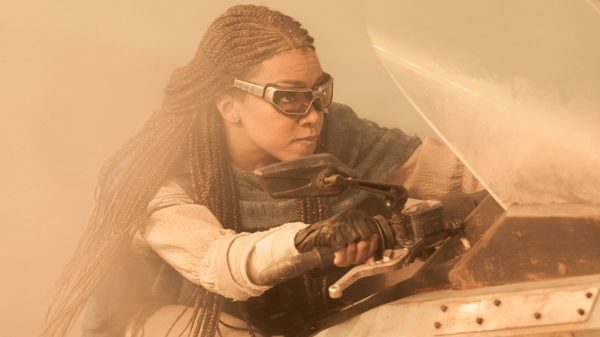
Star Trek: Discovery Season 5 premiere “Red Directive” Review: In Pursuit of Legacies
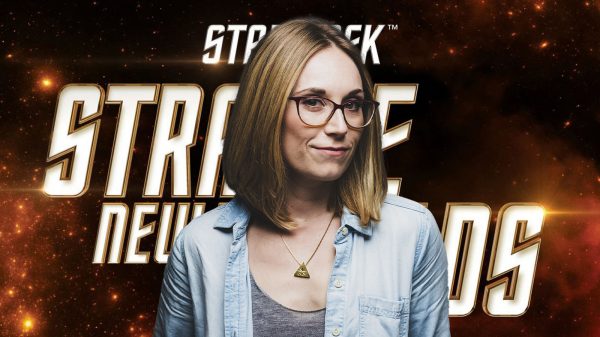
Strange New Worlds director Jordan Canning talks “Charades,” the versatility of the series & Star Trek fandom
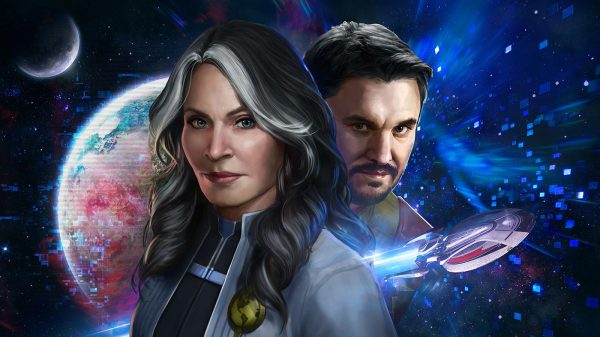
‘Star Trek Online’ lead designer talks the game’s longevity, honoring the franchise, and seeing his work come to life in ‘Picard’

Gates McFadden talks Star Trek: Picard, reuniting with her TNG castmates, InvestiGates, and the Human Condition

Connor Trinneer and Dominic Keating talk ‘Enterprise’, their relationship with Star Trek in 2023 and their first live ‘Shuttlepod Show’
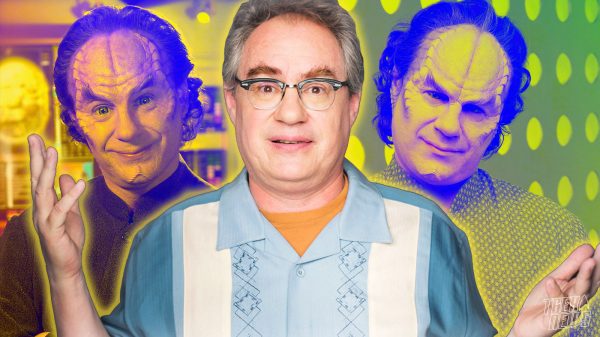
John Billingsley discusses what he’d want in a fifth season of Enterprise, playing Phlox and this weekend’s Trek Talks 2 event

57-Year Mission set to beam 160+ Star Trek guests down to Las Vegas
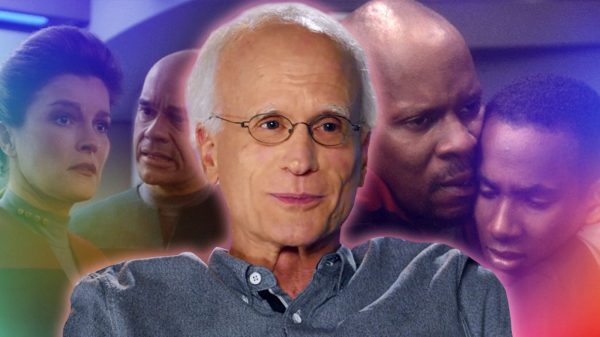
Veteran Star Trek director David Livingston looks back on his legendary career ahead of Trek Talks 2 event
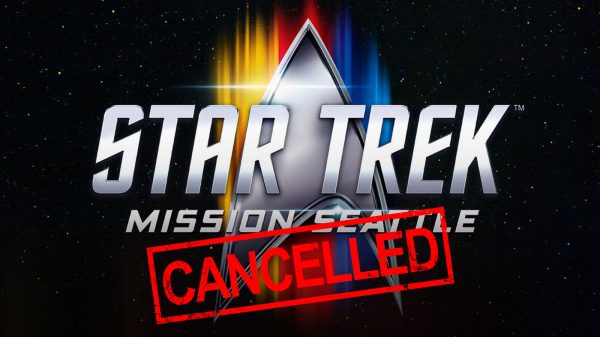
ReedPop’s Star Trek: Mission Seattle convention has been cancelled

56-Year Mission Preview: More than 130 Star Trek guests set to beam down to Las Vegas convention
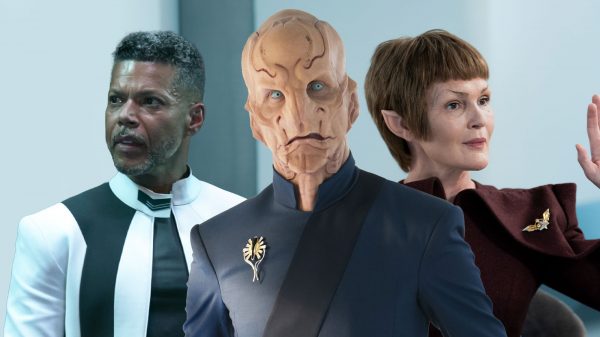
7 new photos from Star Trek: Discovery Season 5 Episode 3 “Jinaal”
![star trek genetic engineering 2023: A banner year for Star Trek — here’s why [Op-Ed]](https://treknews.net/wp-content/uploads/2024/01/star-trek-2023-year-in-review-600x337.jpg)
2023: A banner year for Star Trek — here’s why [Op-Ed]
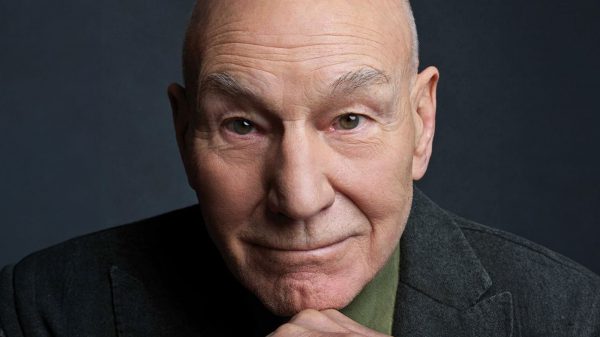
‘Making It So’ Review: Patrick Stewart’s journey from stage to starship

54-Disc Picard Legacy Collection, Star Trek: Picard Season 3, Complete Series Blu-ray box sets announced
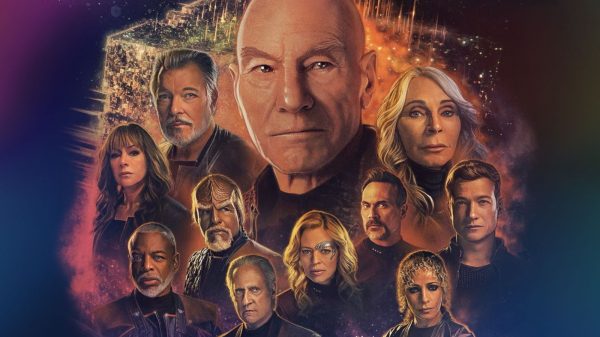
Star Trek: Picard series finale “The Last Generation” Review: A perfect sendoff to an unforgettable crew
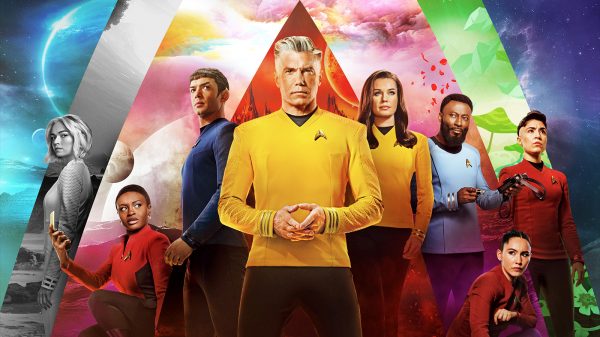
Star Trek: Strange New Worlds arrives on Blu-ray, 4K UHD and DVD this December
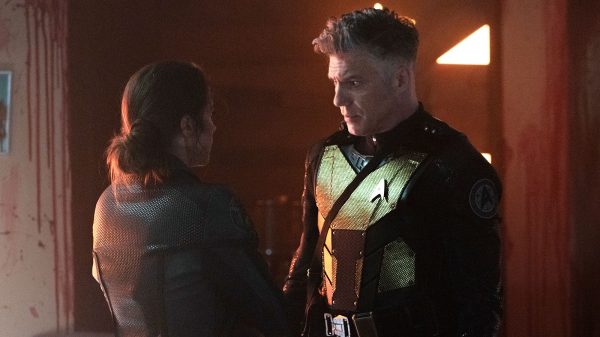
Star Trek: Strange New Worlds “Hegemony” Review: An underwhelming end to the series’ sophomore season
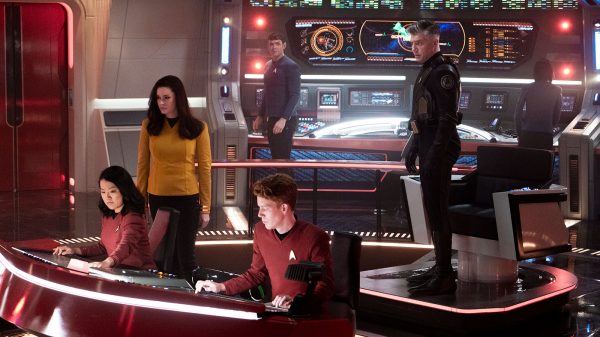
Star Trek: Strange New Worlds season 2 finale “Hegemony” preview + new photos
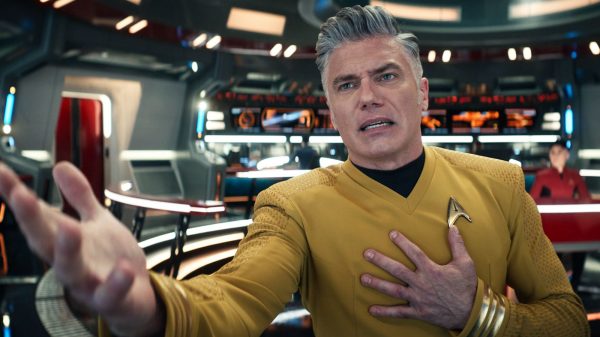
Star Trek: Strange New Worlds 209 “Subspace Rhapsody” Review: All systems stable… but why are we singing?
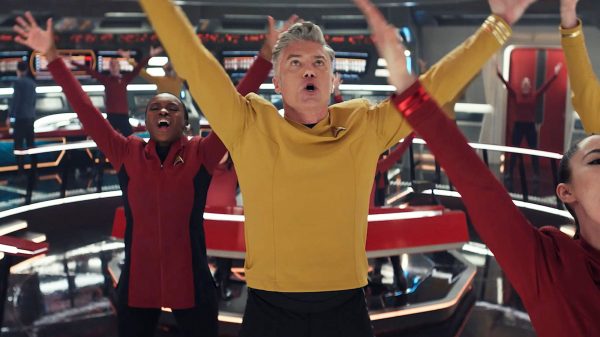
Star Trek: Strange New Worlds “Subspace Rhapsody” preview + new photos
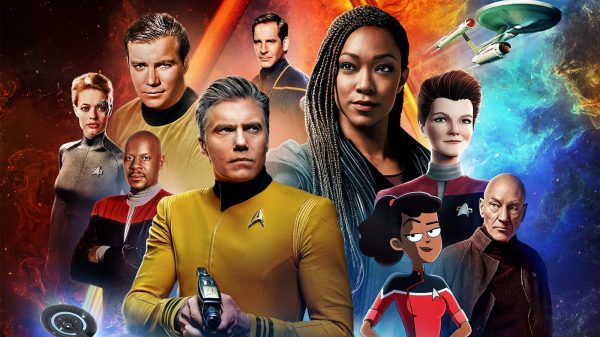
Star Trek Day 2021 to Celebrate 55th Anniversary of the Franchise on September 8 with Live Panels and Reveals

Paramount+ Launches with 1-Month Free Trial, Streaming Every Star Trek Episode
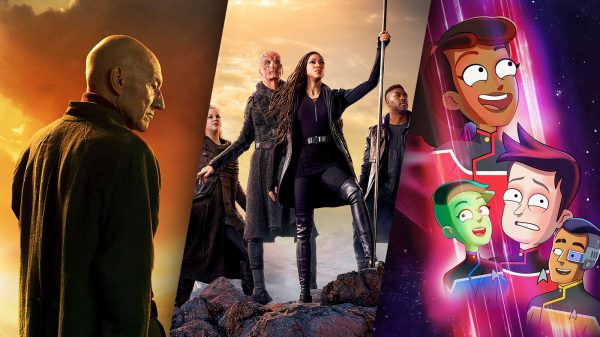
Paramount+ to Officially Launch March 4, Taking Place of CBS All Access

STAR TREK: SHORT TREKS Season 2 Now Streaming For Free (in the U.S.)
![star trek genetic engineering [REVIEW] STAR TREK: SHORT TREKS "Children of Mars": All Hands... Battlestations](https://treknews.net/wp-content/uploads/2020/01/review-star-trek-short-treks-children-of-mars.jpg)
[REVIEW] STAR TREK: SHORT TREKS “Children of Mars”: All Hands… Battle Stations
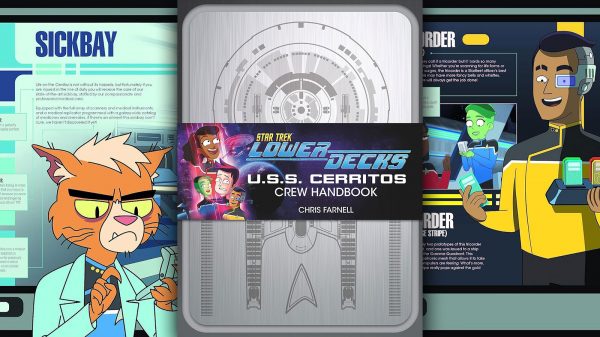
‘U.S.S. Cerritos Crew Handbook’ Review: A must-read Star Trek: Lower Decks fans
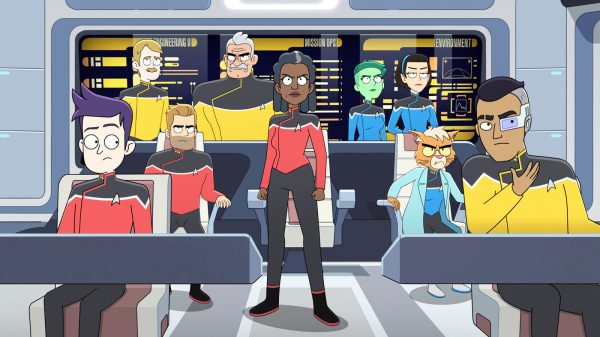
New photos from this week’s Star Trek: Lower Decks season 4 finale
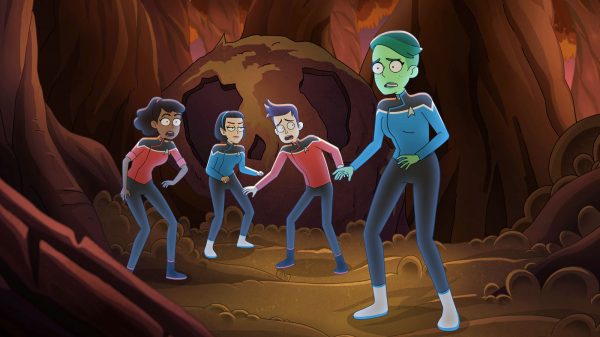
Star Trek: Lower Decks “The Inner Fight” Review: Lost stars and hidden battles
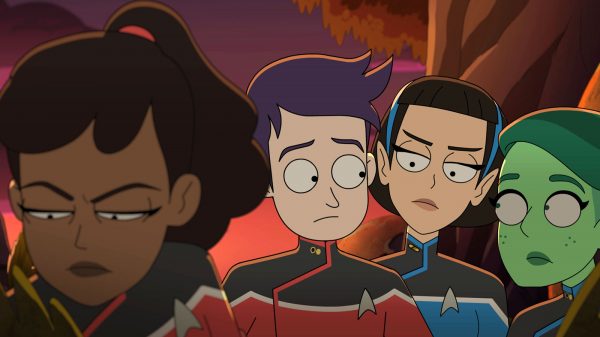
New photos from this week’s episode of Star Trek: Lower Decks
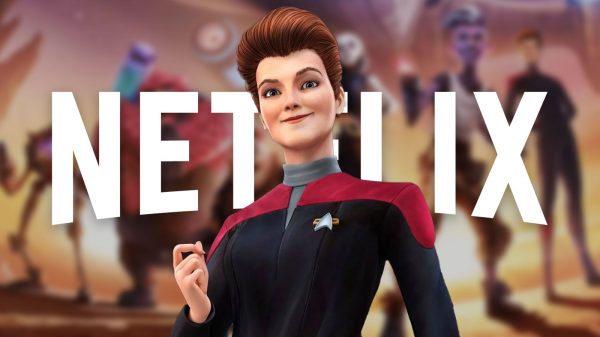
Star Trek: Prodigy begins streaming December 25th on Netflix
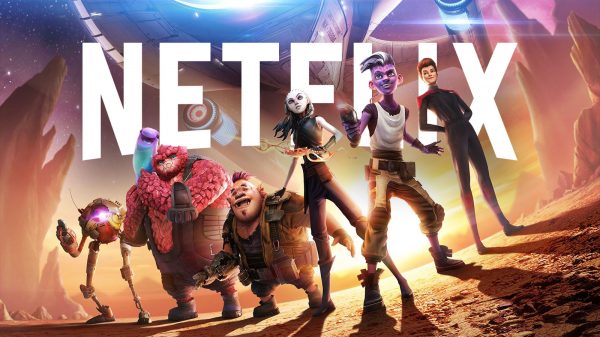
Star Trek: Prodigy lands at Netflix, season 2 coming in 2024
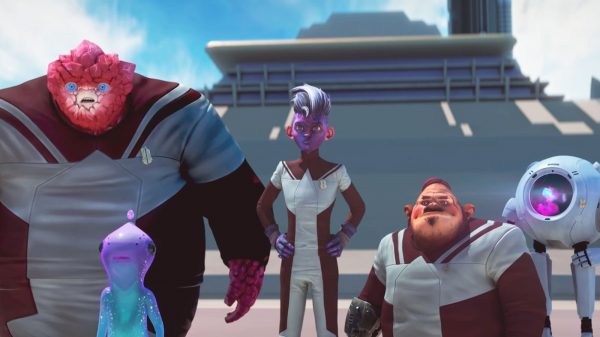
Star Trek: Prodigy Season 2 sneak peek reveals the surprise return of a Voyager castmember
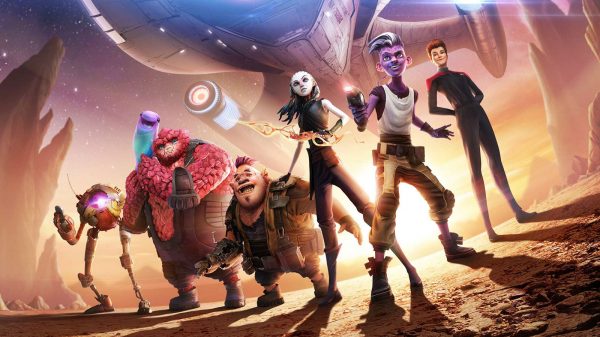
Star Trek: Prodigy canceled, first season to be removed from Paramount+
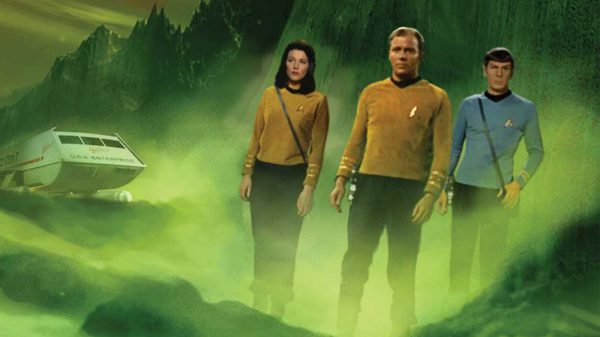
Revisiting “Star Trek: Legacies – Captain to Captain” Retro Review

The Wrath of Khan – The Making of the Classic Film Review: A gem for your Star Trek reference collection
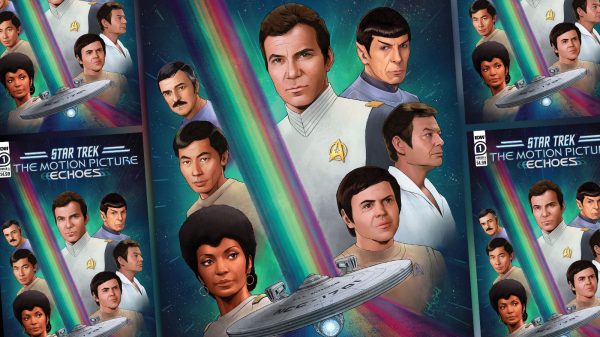
The events of Star Trek: The Motion Picture to continue in new IDW miniseries “Echoes”

Star Trek: The Original Series “Harm’s Way” Book Review

William Shatner’s New Book ‘Boldly Go: Reflections on a Life of Awe and Wonder’ Review: More of a good thing
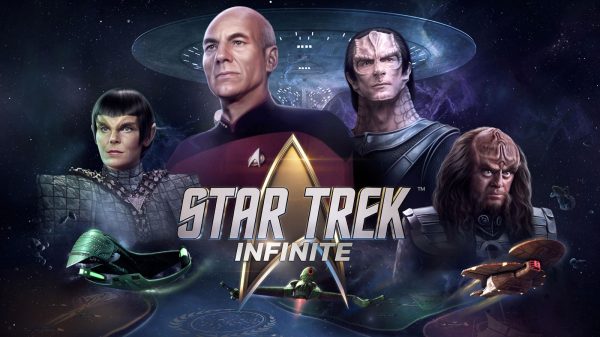
Star Trek: Infinite release date + details on Lower Decks-themed pre-order bonuses
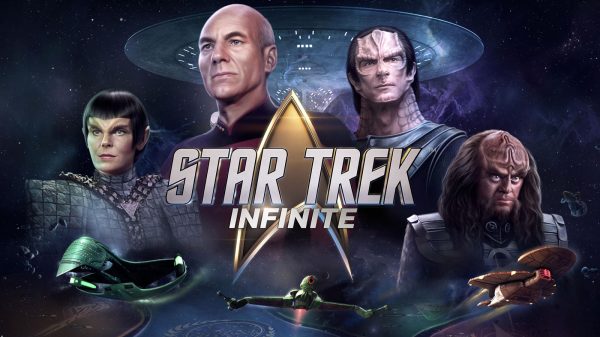
‘Star Trek: Infinite’ strategy game revealed, set to be released this fall
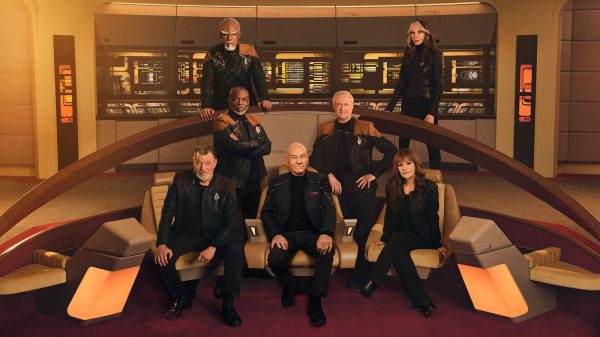
‘The Next Generation’ cast is back on the bridge of the Enterprise-D in new ‘Star Trek: Picard’ photo gallery
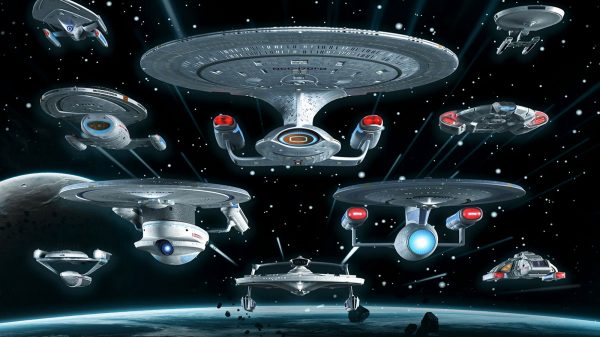
Hero Collector Revisits The Classics in New Starfleet Starships Essentials Collection
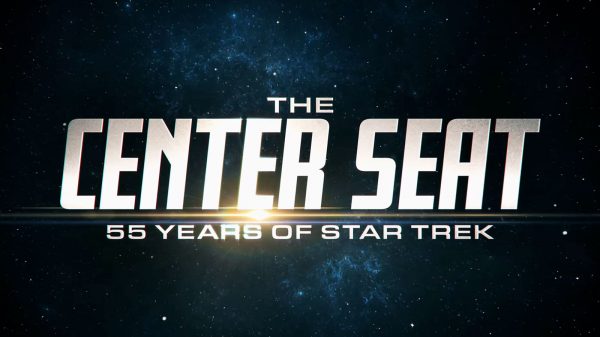
New Star Trek Docuseries ‘The Center Seat’ Announced, Coming This Fall

Star Trek Designing Starships: Deep Space Nine & Beyond Review: a Deep Dive Into Shuttlecraft of the Gamma Quadrant

Star Trek: Deep Space Nine Illustrated Handbook Review: Terok Nor Deconstructed in Amazing Detail
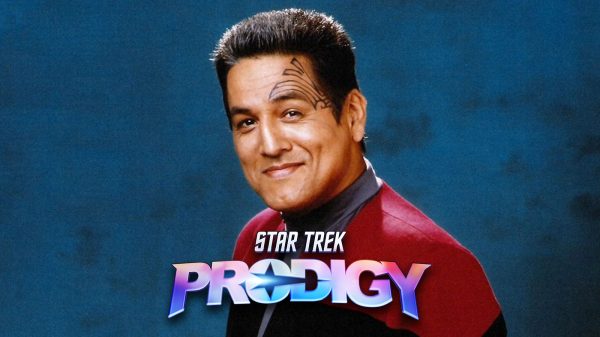
Robert Beltran Is Officially Returning to Star Trek as Chakotay on ‘Prodigy’ + More Casting News
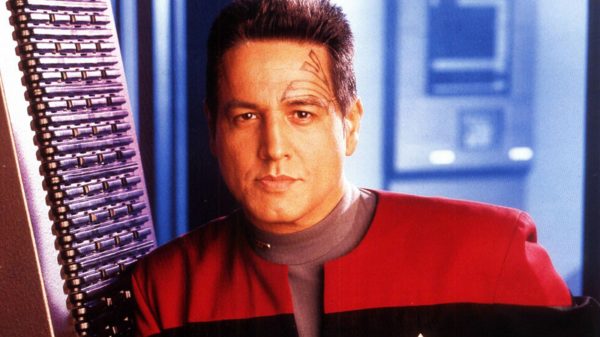
Robert Beltran Says He’s Returning to Star Trek in ‘Prodigy’

John Billingsley Talks Life Since Star Trek: Enterprise, Going to Space and Turning Down Lunch with Shatner and Nimoy
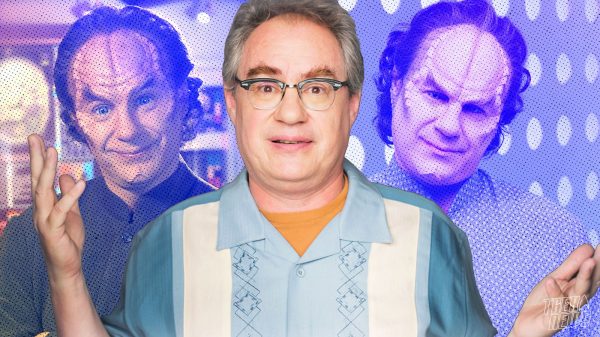
Star Trek: Enterprise Star John Billingsley Talks Charity Work, Upcoming TREK*Talks Event
Science Fiction or Science Fact: Genetic Engineering
“KHAAAN!” shouts Admiral Kirk out of frustration over 20th Century genetic engineering. Or is it frustration over the abuse of 20th Century genetic engineering? In any case, Star Trek science isn’t just limited to physics or astronomy; it also includes biological sciences, and more specifically in those concerning the machinations of DNA and proteins. No Trekker can ever forget the epic performances of the late and dear Ricardo Montalban (Khan) and how his acting impacted Star Trek culture as well as our hearts. In fact, the very name “Khan” has become synonymous with genetic engineering in science fiction. Star Trek often highlights ethical issues with the abuse of biotechnology, prompting fans to discuss and even question the role of science in our society today. In this installment, the topic of bioengineering will be shown for what it truly is today and what it may become tomorrow. Is it really possible to alter our DNA to influence physical and mental attributes like strength and intelligence? If so, can the future ever be safe from genocidal men like Khan Noonien Singh and Colonel Green?
The Breakdown
I hardly need to remind the reader of the well-known biomolecule that “makes” us who we are: DNA (Deoxyribonucleic acid). It is the genetic material that comprises a four-letter language (Adenine, Cytosine, Thymine, and Guanine), which, given in a certain sequence, encodes the “blueprint of life.” In very much the same way a blueprint is required to build a house, DNA is the blueprint with basic instructions required to “build” an organism.
The structure of DNA was first observed by Rosalind Franklin through X-Ray crystallography, which prompted two other scientists, James Watson and Francis Crick, to construct a three dimensional model of DNA and determined that its helical structure implies a language of life, or in their own words: “[it] suggests a possible copying mechanism for the genetic material.” That is, in fact, the case!
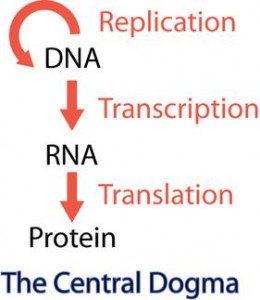
Taken all together, the DNA-to-RNA-to-PROTEIN pathway is a scheme to which Francis Crick referred as “The Central Dogma of Molecular Biology.” Though a few exceptions apply to this simple rule (like HIV, which transcribes its genetic material from RNA to DNA instead of the other way around), virtually all organisms on the planet follow this direct means of genetic storage and expression.
A friend of mine made the following music video for our volunteer group CityLab @ UCLA while we were still attending school together. The video demonstrates the Central Dogma:
It follows from this scheme that changes in DNA could lead to changes in proteins. Random, insignificant mutations of a genome can lead to a large variety of different proteins and traits over the course of millions of years. This is the molecular basis of evolution and natural selection: mutations that lead to favorable traits are selected for and mutations that lead to unfavorable traits are selected against. The process of evolution is extremely slow, and it can take hundreds of thousands (if not a few million) years before humans can adapt mutations in just the right DNA sequences to appropriate new advantageous traits (by “advantageous”, I mean any trait that increases a species’ overall ability to adapt and survive).
Imagine if one were to artificially select for traits to speed up the rate of evolution; to force humans to evolve into something “higher on the food chain” in a matter of years rather than millennia. This is the principle of eugenics: the radical notion that certain traits provide individuals with a greater advantage in society and therefore must be an indicator of some higher socioeconomic status. Artificially selecting these “good” traits (as implied by the Greek stem “eu” in “eugenics”), eugenicists hope to improve the human race by guiding evolution down a more preferable path.
However, there are very dangerous implications with this and so I, once again, allude to the cautionary sci-fi tales of men like Khan who would seek to oppress a whole population and culture simply because their genes were considered “inferior.” Unfortunately, science, most particularly genetic engineering, has had a bad rap for these reasons. I do not feel it is fair to cast judgment for something that is the fault of evil men (not science) without looking at genetic engineering as it is REALLY applied today.
Genetic engineering is the practice of altering, modifying, or manipulating genomes to produce a desired trait or protein. It sounds terrifying, but scientists do this all the time, and the results are usually more impressive than they are dangerous.

Genetic engineering has incredible potential from “BioArt” to medicine, but it has a very simple concept: splice a gene into an organism’s genome to produce a particular protein. That’s it. Sometimes rearranging genetic sequences is involved and other times restoring a mutated gene to its wild-type (normal) sequence is required in order to correct a disorder, but all-in-all, genetic engineering is performed today by incorporating genes into a new host genome in order to provide a new function to that organism. Genetic engineering is commonly performed on bacteria, sometimes rats, but rarely is anything more complex used in laboratory research (humans may be used if and only if the benefits outweighed the risks). No supermutants, no tyrants, no Khans or Colonel Greens were ever created in the process; no politics, no racial injustices, and no unnecessary evils are ever performed in legitimate, ethical science. Here are other common practices of this scientific discipline currently under investigation:
Hormone-Drug Therapy (already perfected) Modifying bacteria to produce insulin has not only improved the life-expectancy of diabetics, but it has made insulin treatments much more affordable and readily available for patients in need of them.
International Aid and Relief (already perfected) Bioengineering rice grains (aka: Golden Rice) to produce vitamins that are normally deficient in poor diets will help reduce famine and depression in third world nations.
Environmental Protection (available in the near future) Bacterial genomes can be altered to encode enzymes that breakdown crude oil (these bacteria already exist in nature, but genetic engineering accelerates their oil-metabolism); this application of science may actually clean up oil spills on shorelines and near bodies of water much more efficiently than conventional means today (plus, using bacteria to perform a natural function is no where near as environmentally hazardous as spraying chemical surfactants across large oil spills). As a matter of fact, oil-eating bacteria have already been tested on water samples from the BP oil spill in the Gulf of Mexico; initial results were extraordinary.
Gene and Stem Cell Therapies (still in the works, but promising) Genetic engineering in conjunction with stem cell therapy could treat (may even cure) genetic disorders much more effectively than conventional drug therapies. Genetic engineering can potentially cure diseases like muscular dystrophy, sickle cell anemia, severe combined immunodeficiency disorder, and others.
The Final Verdict
Genetic engineering is indeed a Science Fact; it is even currently practiced today, and almost certainly likely to continue on into the 24th Century (assuming the Federation doesn’t ban it first). Genetic engineering provided scientists the means to study diseases in greater detail, to restore chemically polluted environments, and to treat millions of people suffering from life-threatening diseases. Not only is genetic engineering possible, but it has the potential to save lives. Assuming Mankind learns to coexist peacefully with advanced technology, genetic engineering will become more advanced and more efficient to achieve even more wondrous things 300 years from now.
Unfortunately, there is a dark side to genetic engineering. In the same way the science of nuclear fission provided us with an environmentally-safe alternative to energy production, it also prompted governments to apply it for military uses. Genetic engineering can save lives, but it can very well destroy them when applied unethically. The Eugenics Wars, human cloning and augmentation, “biogenic weapons”, forced sterilization, genocide, and even the Klingon “smooth heads” (“Affliction” and “Divergence” Star Trek: Enterprise ) are all examples of genetic engineering performed with malicious intent on Star Trek . What’s worse is that there is really no such thing as the “intelligence gene,” the “speed gene,” the “strong gene,” or the “rich/poor gene”, yet pseudo-scientists like Sir Francis Galton and prominent figures in Nazi Germany and Soviet Russia actually tried to apply eugenics to selectively breed for these non-existent “wonder genes”. And several nations around the world (Singapore and China are two places that come to mind) are still practicing eugenics, despite its unfounded and pseudoscientific origins.
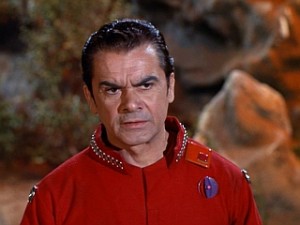
Francis Galton, the man who originally coined the term “Eugenics”, applied Darwin’s Theory of Natural Selection out of context and advocated for artificial breeding programs to “purify” the human gene pool as a means to advance society. Please bear in mind, eugenics does not follow from the study of evolution or natural selection; its motivations are exclusively political, not scientific, and no rational scientist would ever pursue eugenics or genetic engineering to outbreed a trait they deemed racially or socially inferior. In summation, Mankind will be safe from tyrants like Khan Noonien Singh as long as science is conducted ethically, professionally, and apolitically. Scientists are motivated by the desire to learn, discover, and improve, not to conquer or control. As long as we maintain this, genetic engineering will work for the human race in the future, not against it.
Tom is a recent graduate of UCLA with a Bachelor’s of Science degree in biochemistry. He is currently studying muscle growth mechanisms on his time off from school and aims to earn a Ph.D in molecular biology later in the future. He can speak French and Klingon, considers himself an avid Star Trek fan, and his hobbies include studying the Star Trek canon, playing video games, reading sci-fi novels, and performing cool science experiments on the side. ‘ej HISlaH tlhIngan Hol vIjatlhlaH!

June 25, 2011 at 11:00 pm
Interesting stuff. When I first saw ST2 back in the day I hated that they were introducing genetic engineering into MY Star Trek. Now, looking back it was done very well and not OVERdone as it is in many sci-fi/comic book movies these days.
June 26, 2011 at 6:27 am
I agree with you. Biology has always been a touchy subject in science fiction. It’s either dumbed down or it’s completely wrong. Not only does Star Trek present biology as we understand it today, but it portrays science from the point of view of what Mankind may achieve in the future.
Your email address will not be published. Required fields are marked *
Trending Articles

Review: Star Trek: Picard – Firewall Seven of Nine, a heroine who has resurged in popularity thanks to Jeri Ryan’s return to the franchise...
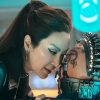
An article celebrating the longevity of the Star Trek franchise has given us our first look at Michelle Yeoh’s upcoming Star Trek: Section 31...

Star Trek: Discovery Season 5 stumbles with “Jinaal” Discovery’s voyage to the ultimate treasure brings Captain Michael Burnham and her crew to Trill, where...
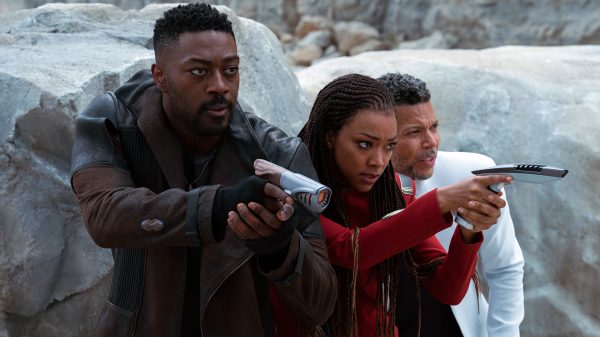
Star Trek: Discovery Season 5 trailer teases Burnham & crew’s final mission
With the launch of the final season of Star Trek: Discovery right around the corner, Paramount+ has released an official trailer for the series’...
Star Trek: SNW S2E2 Puts The Spotlight Back On Genetic Engineering
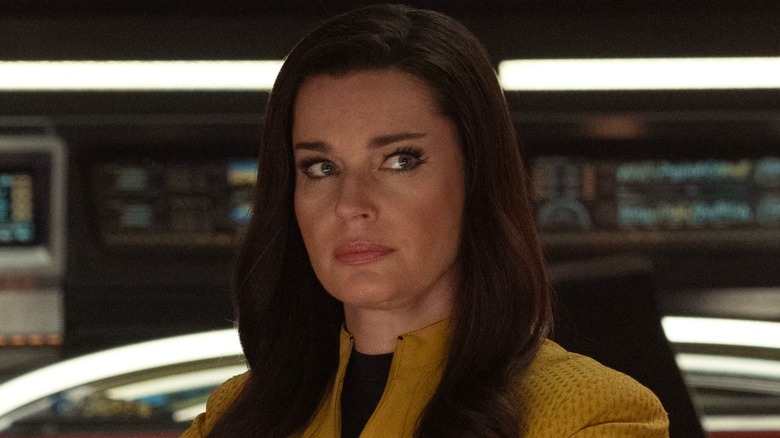
Contains spoilers for "Strange New Worlds" Season 2, Episode 2 — "Ad Astra Per Aspera"
Starfleet is generally known for its acceptance of many different cultures and alien species, but there are some rules when it comes to who is allowed to serve in the galaxy-spanning organization. At the end of Season 1 of "Star Trek: Strange New Worlds," Una Chin-Riley (Rebecca Romijn) is arrested after the authorities are alerted to the fact that she is an Illyrian — a humanoid species that engages in genetic modification as a cultural practice.
Luckily, Una is the first officer of Captain Pike (Anson Mount), who wastes no time in vowing to clear her of all charges. In Episode 2, it is revealed that he left the Enterprise to convince an Illyrian lawyer to defend Una at her court-martial, to which the remainder of the episode is dedicated.
The reason why genetic modification is so frowned upon in Starfleet is due to the Eugenics Wars, a series of conflicts that left over 30 million people dead and resulted in the devastation of Earth. In fact, they made such an impact on the United Federation of Planets that genetic engineering was banned and those who had been augmented were prohibited from enlisting in Starfleet.
The Eugenics Wars left a deep scar on the Federation
One doesn't have to look far to see how and why eugenics is viewed so negatively among the Federation. One of the most notable villains of the original "Star Trek" series is Khan Noonien Singh (Ricardo Montalban), a powerful tyrant on Earth during the Eugenics Wars.
As a genetically engineered human, Khan is much smarter and stronger than a baseline human, which unfortunately instills in him an incredible sense of superiority. Aside from Khan, there were other augmented humans that shared similar traits, although they were originally designed that way in the hope that their advanced intelligence and physical traits would usher in an era of peace.
Unfortunately, these genetically enhanced humans instead became tyrants, resulting in around 30% of Earth's population being killed. Considering this, it makes perfect sense as to why Starfleet would be apprehensive about genetically modified individuals and why they would not be allowed to serve in a military organization, for fear of history repeating itself.
Una Chin-Riley's genetically modified status is a major plot point of Strange New Worlds
We first find out that Una isn't human in Season 1, Episode 3, "Ghosts of Illyria," in which it is revealed that her genetic modification makes her immune to the light virus that has infected nearly everyone on the ship. Unfortunately, she doesn't have any antibodies, so she spends her time trying to come up with a solution while protecting her crew from the effects of the virus, which include self-harm as a result of trying to get as close to a light source as possible. Eventually, Nurse Chapel (Jess Bush) is able to synthesize an antidote using chimeric antibodies that have developed in La'an (Christina Chong) due to her proximity to Una, thus saving the entire crew.
Una has proven herself to be a selfless leader, and her absence is keenly felt even in the very first moments of Season 2 of "Star Trek: Strange New Worlds." The fact that such a high-ranking member of Starfleet is court-martialed despite her exemplary record, just for hiding her genetic modification, is a testament to how deep the Federation's fear of another Eugenics Wars runs, something that is evidently to its detriment given that Illyrian technology could greatly enhance the lives of Federation citizens. However, considering Una's position as first officer, this likely won't be the last time audiences get a chance to hear about the pros and cons of genetic augmentation.
56 Years Later, Star Trek Canon Finally Addresses Its Trickiest Moral Question
Genetic engineering doesn’t make you a villain.
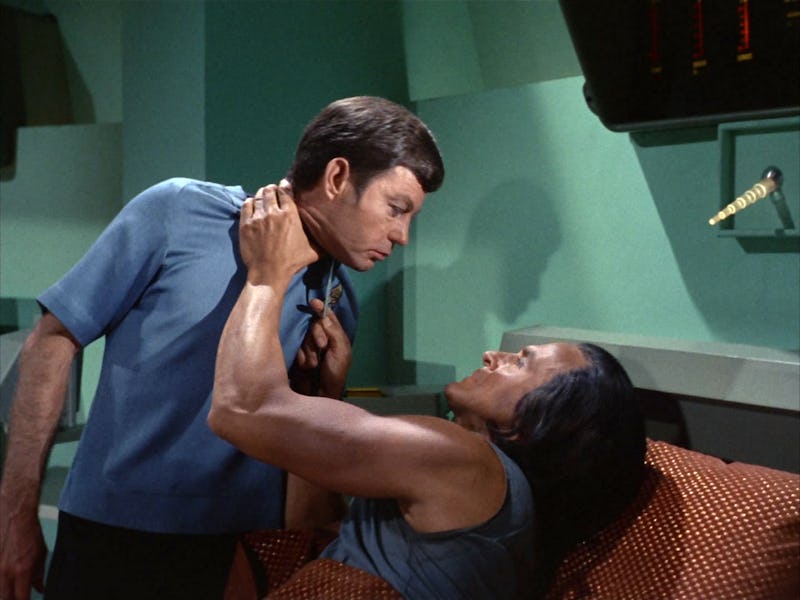
People will never get over Khan. From his introduction in the 1967 episode “Space Seed,” to the famous Wrath of Khan , to the Benedict Cumberbatch version in 2013, and most recently, his distant descendent, La’an Noonien-Singh in Strange New Worlds , Star Trek’s most infamous genetically enhanced supervillain casts a long shadow. But, 56 years after Khan’s debut, the Trek canon is flipping the script on the nature of Khan’s villainy. For a long time, Star Trek has (mostly) posited that people like Khan were evil because they were genetically enhanced. But what Strange New Worlds presupposes is — maybe not?
In the Season 2 Strange New Worlds episode “Ad Astra per Aspera,” Una Chin-Riley (Rebecca Romijn) faces legal charges. In a bit of retcon, Season 1 of SNW established that Una was secretly an Illyrian, an alien culture that practices genetic modification as a way of life. In “Ghost of Illyria,” we learned that Una had hidden her genetic modifications to blend in at Starfleet, and in “A Quality of Mercy,” Starfleet arrested her for violating its anti-genetic modification laws. Why can’t you be genetically modified in the open-minded, egalitarian Star Trek future? Well, it all comes down to Khan.
Khan’s genetics backstory explained

Khan in “Space Seed.”
When “Space Seed” aired during Star Trek’s first season in 1967, the show was still making up its future history. Even the year The Original Series took place hadn’t been established. Khan says he’s been sleeping for “200 years,” but because this episode of TOS was later established to have taken place in 2267, it’s more like 271 years. But the point here is that Star Trek pre-history begins in the 1990s.
“Space Seed” established that Khan was a tyrant who ruled part of Earth in the 1990s and was exiled in suspended animation “sleeper ship” in 1996. This conflict was called the Eugenics Wars, which in “Space Seed” Spock calls “the era of your last so-called World War.”
Trek canon has been stuck with this tricky chronology ever since. Once the Eugenics Wars failed to occur in the real 1990s, various Treks lampshaded or outright contradicted their date and Khan’s rise to power. Greg Cox's trilogy of novels, The Eugenics Wars , began in 2001 and combined fuzzy Star Trek history with real ‘90s history by making Khan’s rise to dominance a secret war fought under false flags and without the general public's knowledge. In the 1996 Voyager two-parter “Future’s End,” the crew traveled back to 1996, where they shrugged their shoulders at the fact there was no evidence of an ongoing World War III. More recently, in Strange New Worlds and Picard Season 2, it’s been suggested the Eugenics Wars led to World War III, and that led to a third of the Earth’s population dying. Then you’ve got a Mad Max -style Earth until 2063 when the Vulcans make first contact.
Trek canon has some wiggle room. In “Space Seed,” Spock said, “Records of that period are fragmentary.” So if you think the new Trek canon is retconning Khan’s origins a bit, brace yourself for even more changes in the future. Was Khan really around in the 1990s? Or was he on Earth later?
How Strange New Worlds goes deeper than TOS

Yetide Badaki as Neera.
If you put aside the trickiness of early Star Trek chronology, what’s interesting about “Ad Astra per Aspera” is that it inverts previous assumptions about the Federation, and turns the existence of Khan into a scapegoat for massive bigots at Starfleet. Season 1 of Strange New Worlds explored this a bit with La’an’s backstory and Number One getting arrested for being an Illyrian, but now it’s going much deeper. Here, Una’s Illyrian lawyer, Neera (Yetide Badaki), has no love for the Federation or Starfleet, because she’s experienced prejudice for being genetically altered her entire life. Neera makes it clear the Federation has used Khan’s atrocities to justify widespread discrimination.
This stigma runs so deep that, during a private conversation with La’an, Neera points out that just because you’re descended from a supervillain —La’an is distantly related to Khan — that doesn’t mean “there’s a monster” inside you. La’an is human, but Neera and Una are not, and thus Strange New Worlds makes a leap that Trek has never quite made before.
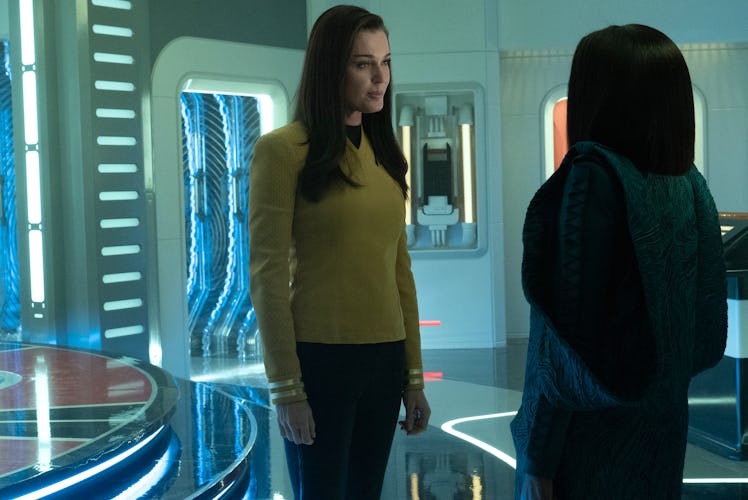
Una and Neera in Strange New Worlds .
In the Deep Space Nine episode “Doctor Bashir, I Presume?” it’s revealed that Julian Bashir was genetically enhanced by his parents when he was very young. A similar conflict arises, and Khan is alluded to, but there’s a crucial difference. In TOS and Deep Space Nine , the idea that genetic alterations could be a cultural norm is never explored. It’s always viewed as a moment where science goes too far. Julian is nice in spite of his genetic modifications, but his parents still transgressed human cultural norms.
Strange New Worlds builds on all of this and makes the subject much more interesting because while Una has violated Federation law, we see an entire culture of Ilyrians living and thriving in the Volterra Nebula. Some may pass for human, but judging people by their appearance is a practice Star Trek has often strived to dismantle. When Pike visits the Illyrian world to recruit Neera, the environment is hostile to his biology. The Illryians aren’t monsters. Pike is the gas-mask-clad outsider, and a representative of the Federation the Illyrians view as narrow-minded bigots.
The resolution of “Ad Astra per Aspera” creates a loophole where Una can stay in Starfleet while making it clear Starfleet isn’t changing its mind. This preserves canon, but the impact is deeper than dot-connecting. With this episode, Strange New Worlds has pointed out that the so-called utopia of the Federation still has its biases and bigots, and that even in the 23rd Century, humans can do better.
Star Trek: Strange New Worlds streams on Paramount+.

This article was originally published on June 24, 2023
- Science Fiction
Star Trek: Julian Bashir's Tale of Genetic Engineering and the Complexity of Parental Acceptance
Dr. Bashir's Star Trek journey challenges viewers to navigate moral ambiguity, the quest for perfection, and the beauty of human imperfection.
Quick Links
Julian bashir: a brilliant healer with a genetic secret, the moral quandary of acceptance, lessons in imperfection.
Dr. Julian Bashir, the brilliant and compassionate chief medical officer aboard Deep Space Nine, carries a secret encoded in his very DNA — a tale of genetic engineering born out of parental concern and the desire for a brighter future. As Star Trek delves into Dr. Bashir's backstory, fans uncover the genesis of his genetic modification.
Dr. Richard Bashir and Amsha Bashir, faced with the challenges of their son's early struggles, embarked on a controversial path. Young Julian grappled with academic and social hurdles, prompting his parents to make a life-altering decision — to genetically enhance their child.
RELATED: Star Trek: What Is Spock's Biggest Flaw?
This move was no small feat, especially in a future Star Trek society that had unequivocally banned genetic engineering on humans. The decision to tread into forbidden territory reflected the desperation of parents who wanted nothing but the best for their son, even if it meant challenging the very fabric of Federation principles.
Born on Earth in the mid-24th century, Dr. Julian Bashir's life story is a fascinating exploration of genetic engineering, moral dilemmas, and the unyielding spirit of resilience. From an early age, Julian exhibited an insatiable curiosity and intelligence that set him apart. However, this precociousness was coupled with challenges that manifested in academic and social struggles during his formative years. As he navigated these difficulties, little did Bashir know that his parents harbored a secret solution to ensure his success and well-being.
Fast forward to Star Trek: Deep Space Nine , where Dr. Bashir has grown into a respected and accomplished Starfleet officer. The revelation of his genetic enhancements becomes a poignant plot point, unfurling a tapestry of ethical questions and societal dilemmas. How does the Federation, an organization built on principles of equality and justice, respond to a man who has been genetically altered against its very laws?
Bashir's tale also casts a spotlight on the darker corners of the Federation's utopian vision . The potential for discrimination against those who undergo genetic enhancements looms large. In a society that prides itself on diversity and inclusion, how does one reconcile with the notion that some individuals might be inherently superior due to genetic augmentation?
Beyond the legal and societal implications lies a deeper moral dilemma — that of acceptance between parents and children. The Bashir family saga prompts us to reflect on the lengths to which parents might go to secure a prosperous future for their progeny. Are there limits to the sacrifices a parent should make for their child's success? And conversely, what are the consequences of discovering that one's success is rooted in a clandestine act of genetic manipulation ?
Dr. Richard Bashir and Amsha Bashir's decision to genetically enhance their son was born out of a desperation familiar to any parent who has watched their child struggle. The desire for Julian to flourish academically and socially led them to defy Federation laws, illustrating the lengths parents are willing to go to secure their child's well-being. This act raises a poignant question: Can we fault parents who, faced with the limitations of their child's natural abilities, resort to extraordinary measures in pursuit of a better life?
The revelation of Julian's genetic enhancements on Deep Space Nine becomes a crucible for acceptance. How does a son reconcile the knowledge that his very essence has been altered without his consent? Dr. Bashir's journey is not merely one of personal discovery but also a narrative on parental acceptance. In learning the truth, he confronts the complex emotions tied to his parents' decisions, and they, in turn, grapple with the consequences of their choices.
The moral predicament extends beyond the personal realm into the broader context of societal expectations. While the Federation frowns upon genetic engineering, does this condemnation extend to familial relationships ? The Bashir family saga forces us to confront the potential discrimination that may arise even within the most intimate unit — the family.
In the Federation's pursuit of perfection and equality, the Bashir family's story reminds fans that imperfection is an intrinsic part of the human experience. The moral quandary of acceptance challenges humanity to reevaluate societal norms and the expectations we place on ourselves and others. Does the pursuit of an idealized version of humanity risk overshadowing the beauty found in our flaws and uniqueness?
Acceptance, in this context, is not a one-time act but a continuous process of understanding, forgiveness, and redemption. Julian Bashir's journey is not about absolving his parents or the Federation of their actions but about finding a path forward. It explores whether acceptance, even in the face of grave mistakes, can lead to personal growth, reconciliation, and a deeper understanding of what it truly means to be a family.
In navigating the ethical dilemma of acceptance, Star Trek offers us a mirror to reflect on our own societal norms, familial relationships, and the intricacies of the human spirit. The legacy of Dr. Bashir challenges us not just to question the ethics of genetic engineering but to embrace the imperfections that make us undeniably human. It is a call to arms for empathy, understanding, and the enduring power of acceptance in the face of profound moral complexity.
Star Trek is a space exploration franchise originally created by Gene Roddenberry. The series has spanned shows like The Original Series, The Next Generation, and Voyager. More recently, developer Scopely came out with Star Trek Fleet Command, a mobile title where you get to be captain of your own ship.
MORE: Star Trek: Best Episodes From Each Series

Eugenics Wars
- View history
The Eugenics Wars (or the Great Wars ) were a series of conflicts originally fought on Earth between 1992 and 1996 ( TOS : " Space Seed "), which later shifted to the 21st century due to efforts by various temporal factions to stop the rise of Khan and the events that followed; Romulan temporal agent Sera suggested that "it's almost as if time itself is pushing back and events reinsert themselves." ( SNW : " Tomorrow and Tomorrow and Tomorrow ") It has also been known as the Eugenic War , Second Civil War and World War III at different points. ( SNW : " Strange New Worlds ") The result of a scientific attempt to improve the Human race through selective breeding and genetic engineering , the wars devastated parts of Earth, by some estimates officially causing some thirty million to tens of millions of deaths, and nearly plunging the planet into a new Dark Age . ( TOS : " Space Seed "; ENT : " Borderland "; SNW : " Ad Astra per Aspera ")
The Eugenics Wars resulted in a ban on genetic engineering and centuries of prejudice against Augments , who were forbidden from enlisting in Starfleet , as were those erroneously perceived to be Augments due to their ancestry. It also resulted in discrimination against Illyrians , who were known to adapt themselves to colonies rather than terraform worlds. ( SNW : " Ghosts of Illyria ", " A Quality of Mercy "; DS9 : " Doctor Bashir, I Presume "; PRO : " Mindwalk ", " Supernova, Part 1 ", " Supernova, Part 2 ")
- 2 Rise to power
- 3 Conflicts
- 4 Aftermath
- 5.1 Related topics
- 5.2 Background information
- 5.3 Apocrypha
- 6 External link
Prelude [ ]
Records from this period are fragmented, and the exact circumstances have changed due to temporal interference. Regardless, the wars' roots lie in a group of Human scientists' ambitious attempt to improve the race through selective breeding and genetic engineering. They created a race of "supermen," popularly known as the Augments , who were mentally and physically superior to ordinary Humans. They were five times stronger than the average person, their lung efficiency was fifty percent better than normal, and their intelligence was double that of normal Humans. They also had enhanced senses, including an ability to hear beyond that of Human capabilities. ( TOS : " Space Seed "; ENT : " Borderland ", " Cold Station 12 ")
The Augments were originally created by the scientists in the 1950s Cold War era in the hopes that they would lead Humanity into an era of peace in a world that had only known war. ( Star Trek Into Darkness ) One aspect these scientists overlooked was the personality of the Augments. Along with their superior abilities, the Augments were aggressive and arrogant, flaws which the scientists were unable to correct at the time due to the infancy of the science. One of the Augments' creators realized the error, writing that "superior ability breeds superior ambition." That same scientist was ultimately killed by one of his own creations. ( TOS : " Space Seed "; ENT : " Cold Station 12 ", " The Augments ")
Rise to power [ ]
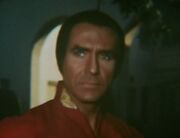
Khan Noonien Singh in the 1990s
The Augments originally rose to power and held dominance over a large portion of Humanity, beginning in the early 1990s . Among the most notorious of these superhuman conquerors was Khan Noonien Singh , who in 1992 became the "absolute ruler" of more than a quarter of the planet, from Asia through the Middle East . ( TOS : " Space Seed ")
The following year , a group of fellow "supermen" followed in Khan's footsteps, and simultaneously seized power in over forty nations. The people of these conquered nations, in most cases, were treated as little more than slaves by the Augments. Khan considered himself "a prince , with power over millions". It was unknown how he viewed or treated those under his rule, although they had very little freedom. Unlike the other Augment despots, however, Khan's reign had enjoyed peace. The people were not massacred, and Khan avoided war until his region was attacked. Khan considered himself a benign dictator or one who led by a form of "gentle authoritarianism"; as such he was thus among the most admired of the so-called " tyrants " into the 23rd century , being called the "best of the tyrants" by James T. Kirk . ( TOS : " Space Seed "; Star Trek II: The Wrath of Khan ; ENT : " Borderland ")
A Romulan time agent named Sera tried to assassinate Khan in 1992, but could not do so until much later due to temporal interference that stalled human technological advancement by several decades. Despite these changes, many of the aforementioned events still occurred, but were now moved forward in time. In this revised version of the Prime timeline, Khan was still a child in 2022 Toronto , being monitored at the Noonien-Singh Institute for Cultural Advancement , where the assassination attempt occurred. Unbeknownst to him, he was saved by a time-travelling descendant of his, Starfleet Lieutenant La'an Noonien-Singh . ( SNW : " Tomorrow and Tomorrow and Tomorrow ")
Conflicts [ ]
Reports as to exactly how the wars began vary; some claim that Humanity rose up against Khan and his fellow "supermen," while others believe the Augments began to fight among themselves. Still others suggest that the Eugenics Wars were part of a larger conflict over the nature of freedom, alongside the Second American Civil War ( SNW : " Strange New Worlds ") Regardless of their origin, two factors were certain: the Eugenics Wars had a devastating impact on Earth, as entire populations were bombed out of existence, and that humanity ultimately deposed the Augments. ( ENT : " Cold Station 12 "; TOS : " Space Seed ")
Among the areas affected by the wars was North Africa . One conflict that occurred there involved a battalion of soldiers that included the future great-grandfather of Starfleet Captain Jonathan Archer . In this encounter, Archer's great-grandfather was able to convince the Augment commander of his enemy's forces to hold their fire long enough to evacuate a school that was directly between them. Some or all parts of that account may be non-factual as Archer was evidently in an altered state of mind around the time he disclosed it. ( ENT : " Hatchery ")
The Augments were eventually defeated by Humans who were not genetically enhanced. Khan was the last of the tyrants to be overthrown, originally in 1996 . Khan and over eighty of the "supermen" were condemned to die as war criminals. They however went unaccounted for, a fact the governments of the time did not disclose to the public in order to prevent panic. Rumors were later confirmed in the 23rd century that Khan and 84 of his followers had managed to flee the planet aboard an early sleeper ship , the SS Botany Bay . ( TOS : " Space Seed "; Star Trek II: The Wrath of Khan ; Star Trek Into Darkness )
The official number of casualties from the wars was placed at 30 million, although some historians believed it to be closer to 35 million, with another figure established as being 37 million. Although the wars may have ended, Humanity's fear of genetically-engineered beings remained well into the 24th century . ( ENT : " Cold Station 12 "; TOS : " Bread and Circuses "; DS9 : " Doctor Bashir, I Presume ")
Aftermath [ ]
Following the wars, controversial debates ensued between Earth's governments regarding the fate of thousands of Augment embryos . Uncertain of how to handle the issue, the governments opted to have the embryos placed into cold storage , unbeknownst to the general public. ( ENT : " Borderland ", " Cold Station 12 ", " In a Mirror, Darkly, Part II " historical archive ). The issue of genetic manipulation and Human genome enhancement continued to plague Earth well into the 21st century. In 2024 , Doctor Adam Soong began examining an old file from 1996 , which was called " Project Khan ". ( PIC : " Farewell ") It is unknown whether Soong went forward with a new genetic engineering project sometime after 2024 based on the original Augment project, or joined the one in Toronto, where Khan lived after the timeline had been changed ( SNW : " Tomorrow and Tomorrow and Tomorrow ").
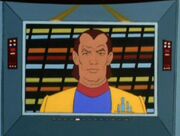
Doctor Keniclius
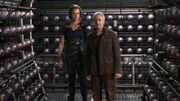
Soong and the Augment embryos
Genetic engineering of Humans was ultimately banned on Earth, as the concept was considered anti-Humanistic by Earth leaders. As a result of this, Doctor Stavos Keniclius was exiled from his community, which eventually led him to depart Earth permanently. The ban was placed primarily as an attempt to prevent another event like the Eugenics Wars, and to ensure that Humanity did not endure the wrath of another Khan Noonien Singh-type tyrant. ( TAS : " The Infinite Vulcan "; DS9 : " Doctor Bashir, I Presume ", " Statistical Probabilities ")
The ban on genetic engineering was challenged by the geneticist Arik Soong in the 2130s , when he stole some of the Augment embryos left over from the wars which were being kept at Cold Station 12 . Soong believed that genetic engineering was the key to improving Humankind and preventing illness, and that it should be given another chance. By raising the Augments himself, Soong believed he could prevent them from behaving like their brethren from the Eugenics Wars. His plan failed as the aggressive nature of the Augments dominated, and they threatened to incite war and cause mass murder. Starfleet 's mission to hunt down and capture the renegade "supermen" ultimately led to the destruction of the Augments, as well as most of the embryos. ( ENT : " Borderland ", " Cold Station 12 ", " The Augments ")
Not all of the embryos were destroyed, though. Some found their way into the hands of Klingons who, believing Humans were improving themselves in order to conquer the Klingon Empire , attempted to use the DNA from the embryos to enhance themselves. The end result was a mutation of a highly-contagious virus that caused massive changes in physical appearance, biological structure, and even basic personality traits of large portions of the Klingon race. ( ENT : " Affliction ", " Divergence ")
The continued banning of genetic engineering ultimately became a point of contention between the Federation and the Illyrian race. Since the Illyrians were known for using genetic modification within its members, Illyrians were usually barred from entering service into Starfleet and even use of their medical technology became banned within the Federation. The mixing of Human and Illyrian blood was similarly banned. ( SNW : " Ghosts of Illyria ")
In 2259 , La'an Noonien-Singh , Khan's descendant, traveled back in time to stop his assassination by Romulan temporal agent Sera . Sera told La'an that "Khan becomes a brutal tyrant. I mean, maybe humanity needs the dark age that he brings in to usher in their age of enlightenment. Or maybe it's just random. Doesn't really matter though, 'cause if I kill him, the Federation never forms, and the Romulans lose their greatest adversary." ( SNW : " Tomorrow and Tomorrow and Tomorrow ")
In the 2260s , after the USS Enterprise encountered a spaceship from the 1990s, Spock described the mid-1990s as the era of the Human crew 's "last so-called world war ", which was affirmed by Doctor Leonard McCoy to be the Eugenics Wars. ( TOS : " Space Seed ")
Appendices [ ]
Related topics [ ].
- Augment Crisis
- Klingon augment virus
Background information [ ]
In " Space Seed " the "supermen" of the Eugenics Wars were said to be the products of selective breeding; this was later retconned into genetic engineering.
Both " Space Seed " and Star Trek II: The Wrath of Khan give the dating of the Eugenics Wars as the 1990s. At one point during that decade in reality, Ronald D. Moore and René Echevarria had a discussion in which they observed it as odd that the Eugenics Wars seemed to basically be the only evidence of genetic engineering in Star Trek . " It's virtually never discussed, aside from the fact that there was this thing called the Eugenics Wars at some point, and Khan came out of it, " stated Moore. ( Star Trek: Deep Space Nine Companion (p. 431)) Consequently, while writing DS9 Season 5 installment " Doctor Bashir, I Presume ", Moore focused on the idea that the Eugenics Wars had motivated the Federation into deciding not to meddle with genetic engineering. ( Cinefantastique , Vol. 29, Nos. 6/7, p. 49)
In contrast to the Eugenics Wars having previously been established as taking place in the 1990s, "Doctor Bashir, I Presume", set in 2373 , references the Eugenics Wars as having occurred two centuries prior to the episode, placing the Wars in the late 22nd century . As Ronald D. Moore later admitted, this statement was a production error, a line he had taken from The Wrath of Khan , but he had accidentally forgotten to account for the episode being set a century later than the film. ( AOL chat , 1997 ) Confessed Moore, " It was simply a mistake. The date of the Eugenics Wars is something that we have been studiously trying not to pin ourselves down about, because obviously they aren't happening around as we speak [....] What looked like the distant future in 1967 is not so distant any more. I don't blame them for not having the foresight to see that in 30 years this would become important in the series. " A production staffer from Star Trek: Voyager suggested the date had deliberately been changed on DS9 to account for the Eugenics Wars having not been mentioned in the "Future's End" two-parter. Moore flatly rejected that theory and responded, " We never talked to Voyager about it. " ( Cinefantastique , Vol. 29, Nos. 6/7, p. 50)
The original dating of the Eugenics Wars was reaffirmed by Phlox stating in " Borderland " that Arik Soong's Augments were pretty sophisticated for 20th century genetics. Phlox later mentions to the Klingons that genetic engineering on Earth was "banned decades ago," suggesting that the ban was not necessarily adopted by Humans immediately after the Eugenics Wars.
Manny Coto was a fan of this series of conflicts. " I was always fascinated by this idea of this Eugenics Wars, " he commented. " I love the backstory of that story. I just found that just compelling, the idea that it was instigated by these genetically superior individuals. " ("Inside the Roddenberry Vault, Part I", Star Trek: The Original Series - The Roddenberry Vault special features)
In "Space Seed", Spock describes the mid-1990s as "the era of your last so-called world war," with Leonard McCoy directly referencing the Eugenics Wars in response, suggesting this conflict could be World War III . In TOS : " Bread and Circuses ", Spock states that thirty-seven million people died in World War III – consistent with Phlox's assertion that over thirty million died in the Eugenics Wars (again connecting World War III and the Eugenics Wars) – but not Riker 's claim that six hundred million died in the nuclear conflict in Star Trek: First Contact , and again repeated by Burnham in " New Eden ". As Spock was speaking in the context of despotism, and what constitutes despotic "responsibility" is open to interpretation, his statement may not give the total death count.
In TNG : " Up The Long Ladder ", Data states that Humans were still recovering from the effects of World War III in the early 22nd century. This statement makes more sense within the context of a mid 21st century war than that of a late 20th century war, suggesting that World War III and the Eugenics Wars are not the same conflict, as confirmed in Star Trek: First Contact .
According to show runners, Spock was wrong and that Eugenics Wars happened much later during 21st century. Terry Matalas: " We discussed endlessly. We came to the conclusion that in WW3 there were several EMP bursts that kicked everyone back decades. Records of that 75 year period, the 90s on were sketchy. Maybe Spock was wrong? " In response Khan's own references to the 1996 date, that they simply have be ignored to make the series more relatable to the present; "No easy way to do it if you want the past to look and feel like today. Maybe because in 1967 they didn't anticipate the show still going for another 6 decades. " Aaron J. Waltke added: " There's also the ripples of the Temporal Cold War shifting the Prime Timeline in Enterprise — at least until the Temporal Accords put an end to that wibbly wobbliness. " [1]
Star Trek: Strange New Worlds attempted to explain the various mistakes and retcons by creating a literal in-series retcon in " Tomorrow and Tomorrow and Tomorrow ": the fact that Humans were not capable of genetic engineering on the scale of Khan Noonien Singh was actually due to interference by one or more temporally warring factions, including the Romulans. This allows for both the original statements regarding the Eugenics Wars from Star Trek: The Original Series and ones from newer productions to stand somewhat alongside each other.
Apocrypha [ ]
The Star Trek: The Eugenics Wars books portray a different view on the Eugenics Wars as being a more covert hidden battle between the genetically engineered "supermen" rather than an overt one in an attempt to marry the original dates of the Eugenics Wars with the events of the present day. This explains why the United States of America is seen as relatively unaffected in the episode " Future's End " and also raises the quite logical hypothesis that Gary Seven , who was present on Earth at the time of Khan's birth and would have known of the eugenics movement, was involved in the overthrow of Khan and the other tyrants. Numerous 20th century Trek characters appear in the story, including Rain Robinson (who at the end of the second book becomes Roberta Lincoln 's assistant), Ralph Offenhouse (an early financial backer of the genetic engineering program), Clare Raymond (her death is not an embolism but collateral damage from a nerve gas attack, Khan's assassination of Vasily Hunyadi, the fellow Augment secretly behind the Balkan conflicts of the early 1990s), Gillian Taylor , Flint (as "Wilson Evergreen"), and Jeff , who designed the Botany Bay – with Shannon O'Donnel and Walter Nichols involved in the project – primarily with technology reverse-engineered from Quark's Treasure .
In the Star Trek: Khan comic book series associated with the alternate reality , the creative team went with a portrayal of the wars as being an open conflict that outright affected the whole planet. The depiction of the wars however was filtered through the lens of Khan telling his own version of the events to a Federation court. As such, the series frequently cast doubt on how much of the events he depicted were actually true to his memory and how much of it was perhaps Khan simply spinning a fanciful version that would garner him sympathy with those present to hear his words.
In "The Rules of War", a short story from the anthology Strange New Worlds 9 , the enemy commander whom Archer's great-grandfather Nathan Archer negotiated with in North Africa is Stavos Keniclius.
External link [ ]
- Eugenics Wars at Memory Beta , the wiki for licensed Star Trek works
- 1 Abdullah bin al-Hussein
- More to Explore
- Series & Movies
Published Jun 23, 2023
RECAP | Star Trek: Strange New Worlds 202 - 'Ad Astra per Aspera'
There's nothing wrong with you; no hidden monster inside.
SPOILER WARNING: This article contains story details and plot points for Star Trek: Strange New Worlds.

StarTrek.com / Rob DeHart
In the previous episode , Captain Pike is preoccupied with his Number One's upcoming trial, with both frustrated they've been unable to reach Una's defense lawyer of choice. Unwilling to lose his first officer, Pike assures her he will seek out the defense lawyer in person.
In Episode 2 of Star Trek: Strange New Worlds , " Ad Astra per Aspera ," Commander Una faces court-martial along with possible imprisonment and dishonorable dismissal from Starfleet, and her defense is in the hands of a lawyer who’s also a childhood friend with whom she had a terrible falling out.

StarTrek.com
- Una Chin-Riley (Number One)
- Christopher Pike
- Neera Ketoul
- La’An Noonien-Singh
- Erica Ortegas
- Dr. Joseph M'Benga
- Nyota Uhura
- Zus Tlaggul
- Robert April
- Christine Chapel

- Vaultera Nebula Colony
- Starfleet Headquarters, San Francisco, Earth
- U.S.S. Enterprise

Gazing at a city’s sparkling lights, a young girl with a severe leg wound overhears her parents debate sending her to a hospital. Her mother assures her, all will be okay, as the girl’s injury gives off an orange glow. Afraid that a doctor’s visit will expose their family and ruin their lives, the girl’s father says her name — Una.
Commander Una Chin-Riley reflects on the memory as she stares at San Francisco’s Golden Gate Bridge from her cell. Una meets with the prosecutor, Captain Batel, who offers the first officer a deal — plead guilty and Starfleet will accept her dishonorable dismissal without prison time or exile. Una balks, viewing this as Starfleet trying to cover its mistake. Una’s counsel advises her to accept, though she doesn’t have faith in him counseling her, as he works for the prosecution.
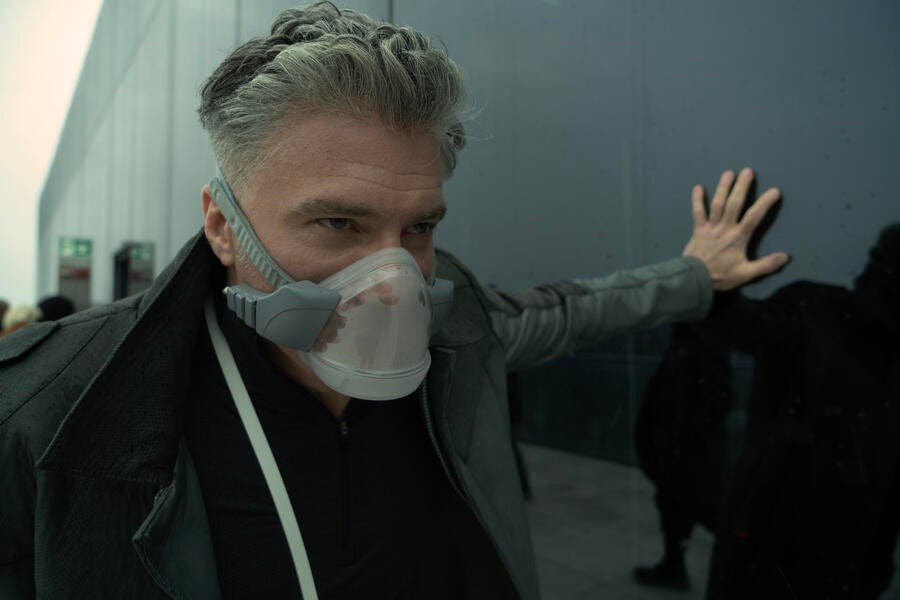
"Ad Astra per Aspera"
Captain Christopher Pike endures a chilly day on a planet in the Vaultera Nebula. The atmosphere is not suitable for humans, requiring Pike to don a respirator. Inside Counsellor Neera Ketoul's building, Pike calls her assistant’s bluff and lets his oxygen run out. Pike bursts into the lawyer’s office, gasping for air as she adjusts the environmental controls to suit human biology. Ketoul is Illyrian — genetically modified to survive here. She refuses to see how Starfleet’s unwillingness to let Una — another Illyrian — serve openly is her problem and denies having a friendship with her. Pike credits a recent mission with illustrating what happens to Illyrians who reverse their modifications to be accepted. Unimpressed, Neera voices dissatisfaction with Starfleet’s draconian race laws, confessing she has kept up with Una’s case. Before leaving, the captain mentions the counselor’s 10 cases against the Federation, which were thrown out due to insufficient evidence. Winning this trial could bring attention to Ketoul's other Illyrian clients. The lawyer remains steadfast, but does not say “no.”

Neera meets Una in her cell, breaking their 25-year hiatus from speaking with an “I told you so”-type quip. Uninterested in reuniting, the counselor has Una recap her story. Until two months ago, the officer’s record was spotless. The change? Someone reported her heritage to Starfleet. Una emphasizes she shouldn’t have to hide anymore — no Illyrian should. Neera relents and accepts the assignment, stating she is doing it for herself and all the Illyrians who can’t — or won’t — pretend to be someone they are not.
Captain Batel stands at the door to Pike’s quarters aboard the U.S.S. Enterprise , irritated by Una’s rejected plea deal. Pleased at the news, Pike feels betrayed by Batel’s role in his first officer’s arrest, despite assurances she sought to help Number One. The argument escalates, and Pike inquires, “What if the law is wrong?” Batel states the Judge Advocate General is looking into the case.
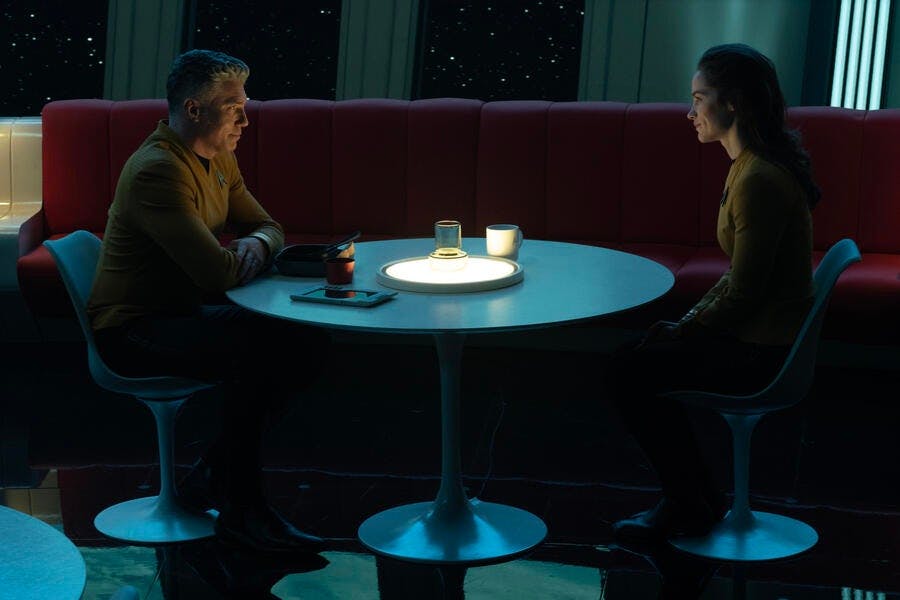
Ketoul and Chin-Riley, as well as Batel and her superior, Vice Admiral Pasalk, confer with Admiral Javas at Starfleet Headquarters. Additional charges, including sedition, are being filed, and the prosecution seeks a dishonorable discharge and 20-year prison sentence. The defense retreats to Una’s cell, where Neera declines Una’s desire to take the stand; the prosecution will seize the opportunity to implicate her friends.
Lieutenant La’An Noonien-Singh escorts Ketoul to Una’s quarters on the Enterprise, where the lawyer will live during the trial. Neera listens as the security officer brings up Starfleet v. Wyck , a case used as an example of “ fruit of the poisonous tree .” Evidence procured through illegal means is inadmissible in court. A determined La’An perceives this applies to Una’s situation and promises to investigate.
Captain Pike reads in the Enterprise ’s mess hall, pausing when Batel takes a seat. Batel intuits Pike’s disappointment over not being part of the defense’s witness list and asks how he met Una. The future first officer approached Pike after he gave a speech to her Starfleet Academy class to highlight an error. Batel interrupts Pike’s fond remembrance with a question, adopting a rigid prosecutorial tone and questioning when he learned Una was Illyrian. Pike concedes Batel’s point — taking the stand would center the case on the captain’s failure to report Una’s ancestry.
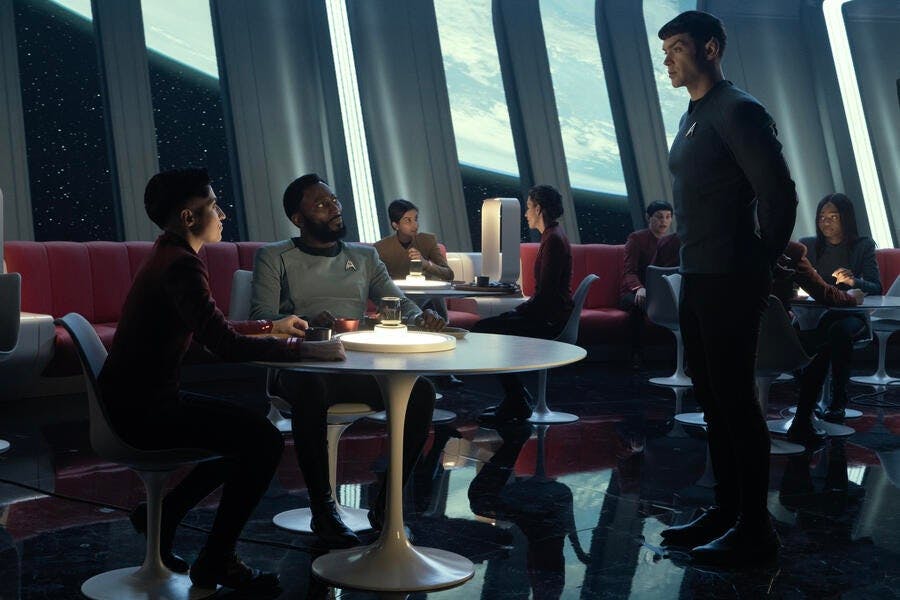
Across the mess hall, Lieutenant Erica Ortegas and Dr. Joseph M’Benga watch Admiral Pasalk and Spock chat. The two Vulcans display no emotion, leading Ortegas to guess they are engaged in a dull conversation about kal-toh . M’Benga disagrees, noticing subtle tension in their body language. Spock finishes with Pasalk and approaches them, apologizing that they witnessed his “outburst.” A former colleague of Sarek, Pasalk brings out the worst in Spock, at least so he believes. Flabbergasted, Ortegas and M’Benga share a quiet laugh once Spock departs.
Up on the Bridge, La’An petitions Ensign Nyota Uhura for communications — including personal logs — referencing Una from the last six months. Uhura hesitates, citing the regulation that only Starfleet Command can unseal private files. Aware La’An wishes to break rules to aid her mentor, Uhura denies the request to protect La’An. The ensign urges La’An to find another way to discover who turned Una in.

The trial commences on Earth, with Admiral Javas presiding alongside Space Command Representative Zus Tlaggul and Starfleet Commander Chiv. Pike and his senior officers follow along via the Ready Room’s viewscreen. Una pleads not guilty. Batel outlines the illegality of genetic engineering, recalling the tens of millions who died during the Eugenics Wars* to prove the folly of “playing God.” Ketoul remarks that slavery, apartheid, and discrimination against people for how they worshiped, who they loved, their gender, and their skin color were once legal. She asserts “a law does not make something just.” To Neera, the Federation became blinded by a centuries' old fear.
Admiral April testifies that he would not have sponsored Commander Chin-Riley's Starfleet application had he known about her modifications. The admiral claims this is based on the law, but Ketoul recites his willingness to violate General Order 1 — now known as the Prime Directive ** — to help pre-warp societies avoid extinction in 2246 and 2248. Apparently, Starfleet's rules only apply when a captain deems they do. The defense pushes too far, accusing April of basing his opinion on racial prejudice. The three judges — human, Tellarite, and Vulcan — cease the proceedings and strike April's answers from the record.
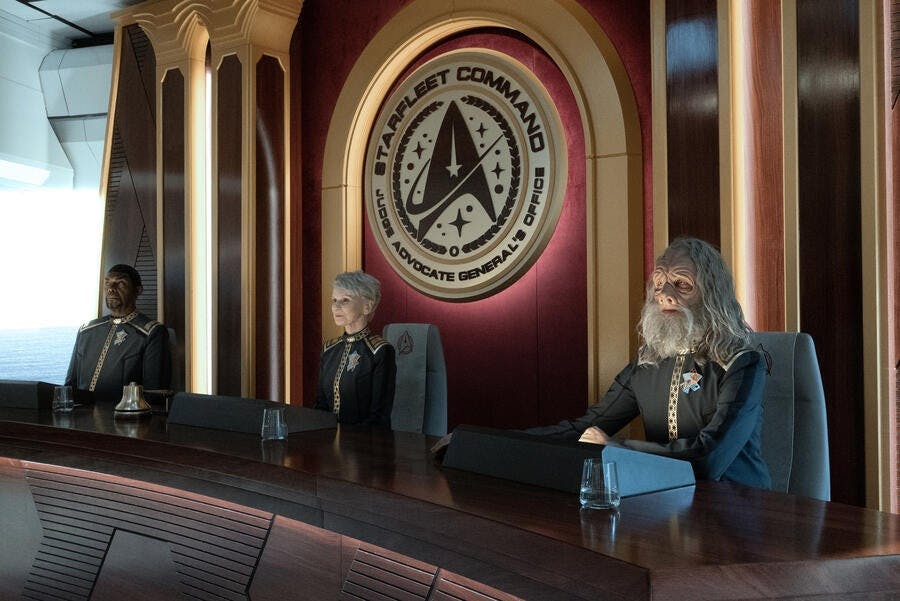
April heads to Pike's quarters, reminding the captain that he recommended Una for the Medal of Gallantry and regretting that the court did not get to hear that side of his story. Back in her cell, Number One is equally upset with her counselor, accusing Ketoul of seeking a "soapbox" to preach about the Federation’s views on Illyrians.
Returning to the courtroom, the defense calls expert character witnesses — La'An, Spock, and M'Benga. Outfitted in a dress uniform, Spock raises an eyebrow as he reveals the one thing he sensed Chin-Riley concealed — an affinity for Gilbert and Sullivan musicals. The trio describe her as a mentor, friend, and family member whose accolades include rescuing La’An from the Gorn.

La'An joins Neera in Una's quarters. Guilt-stricken, she thinks the angry personal log she recorded after learning Number One lied about being Illyrian was responsible for Una's arrest. La'An confesses her worries about her shared bloodline with Khan Noonien Singh, but the attorney assures her there is no hidden monster inside of her.*** Ketoul argues that “ genetics is not destiny ” and alleviates La'An's concerns — it takes 6 months to subpoena a personal log, so her entry was not to blame. It must have been someone who would gain from leaking Una’s identity.
The trial resumes, and Ketoul shocks the room by calling Chin-Riley to the stand. Number One cites Starfleet's pre-Federation motto, ad astra per aspera — "to the stars through hardship," as a reason she joined up. Una reminisces on her childhood at a colony, which agreed to the Federation’s condition that all genetic modification cease. Some families complied, but Una's practiced these customs as cultural traditions. Rituals were performed in secret. Others — such as Ivan Ketoul, her best friend's 10-year old cousin — were outed, ostracized, and arrested. The persecution of Illyrians encompassed everything from being called “Augments” and “Moddies” to fearing for their lives.
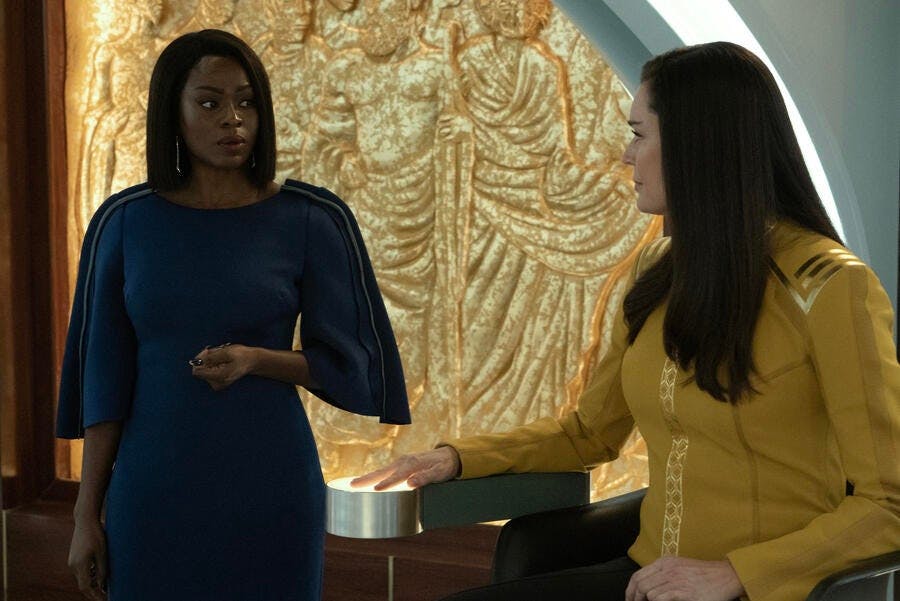
As a child, Una broke her leg while stopping a fight. It became infected, and the girl would have died had they not found an Illyrian doctor who valued discretion. The government divided the colony into two cities — Illyrian and non-Illyrian. Chin-Riley's family left those they knew behind and hid in the non-Illyrian settlement. Neera concludes by pressing Una about how someone so adept at disguising her nature was discovered by Starfleet. Una ultimately relents — she turned herself in.
Perplexed glances infiltrate the audience. A defiant Number One explains she wanted her crew to know her truth and Starfleet to better understand Illyrians. A Federation starship visited Una's colony when she was five or six, and the crew's diversity inspired her love for Starfleet. Her counsel rests, but Admiral Pasalk pushes Una to tell him when Captain Pike became aware of her status as an Illyrian. Chin-Riley reluctantly admits Pike knew for four months, well before her arrest. Pasalk declares it a conspiracy . The Vice Admiral delivers a harsh closing, but Ketoul has Batel read Starfleet Code 8514 aloud:
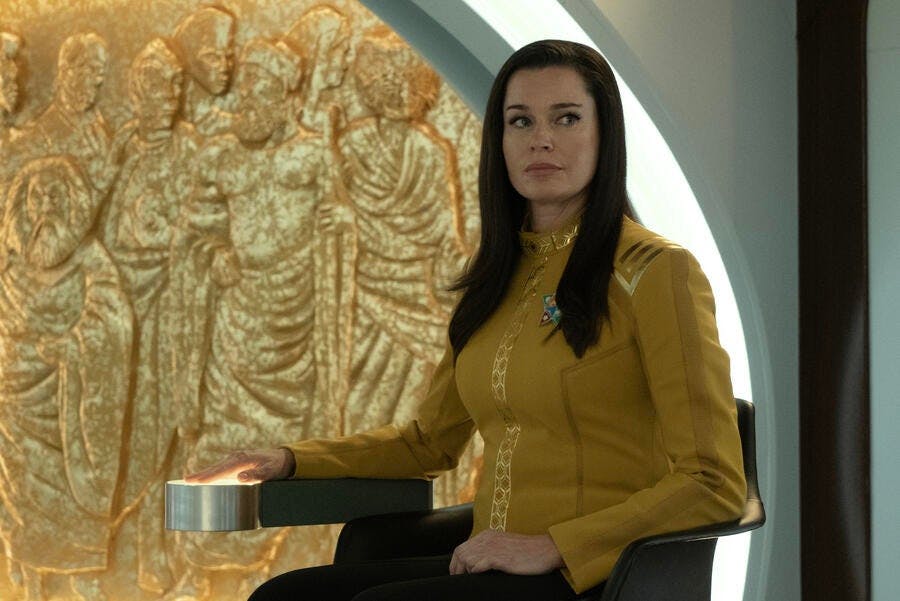
In extraordinary and extreme circumstances, if the following conditions are met —
- any person fleeing persecution or fearing for their life due to political or religious beliefs, cultural engagements, or biological truths may...
- seek safety within Starfleet and...
- upon revealing themselves to authorities and making a request may be granted asylum. Starfleet captains must exercise discretion and judgment when offering asylum .
This mirrors Una's flight from persecution and the asylum given by Captain Pike. If the court confirms it, Una and Pike will be absolved of all violations. The counselor maintains the law reminds us how to be our better selves, something the judges can do by accepting Una's asylum. Delivering the verdict, Admiral Javas agrees the genetic engineering issue is nuanced. Lines must be drawn, but they must also shift when necessary. Javas grants Una asylum and judges her not guilty .

Commander Chin-Riley returns to duty, beaming up to the Transporter Room and thanking Neera for saving her life. Those present — including Captains Pike and Batel — erupt with applause for the Illyrian lawyer, who sees the verdict and the crew's love for Number One as a good start for Federation-Illyrian relations. Ketoul beams away, and Una orders the senior staff back to their stations. Once the crew departs, Pike demonstrates his relief by embracing Una in a firm-but-friendly hug. The captain then pats his Number One on the arm and expresses appreciation for having her back.

* " Borderland " - This Star Trek: Enterprise episode discusses genetic engineering, Augments, and how the Eugenics Wars affected Earth.
** " The Return of the Archons " - The Prime Directive, first referenced in this Original Series episode, is clear — Starfleet is not to interfere with the development of a culture that is living and growing. Violations of the Prime Directive can have serious consequences, despite a crew and/or captain's best intentions.
*** " Space Seed " and Star Trek II: The Wrath of Khan - Both are two crucial entry points to learning more about the genetically-enhanced Khan Noonien Singh. It is his ambition that helped further the Eugenics War. Khan is the reason why Starfleet has banned enhanced individuals.

- Written by Dana Horgan
- Directed by Valerie Weiss
Get Updates By Email
Jay Stobie (he/him) is a freelance writer, author, and consultant who has contributed articles to StarTrek.com, Star Trek Explorer, and Star Trek Magazine, as well as to Star Wars Insider and StarWars.com. Learn more about Jay by visiting JayStobie.com or finding him on Twitter, Instagram, and other social media platforms at @StobiesGalaxy.
Star Trek: Strange New Worlds streams exclusively on Paramount+ in the U.S., U.K., Australia, Latin America, Brazil, South Korea, France, Italy, Germany, Switzerland and Austria. In addition, the series airs on Bell Media’s CTV Sci-Fi Channel and streams on Crave in Canada and on SkyShowtime in the Nordics, the Netherlands, Spain, Portugal and Central and Eastern Europe. Star Trek: Strange New Worlds is distributed by Paramount Global Content Distribution.
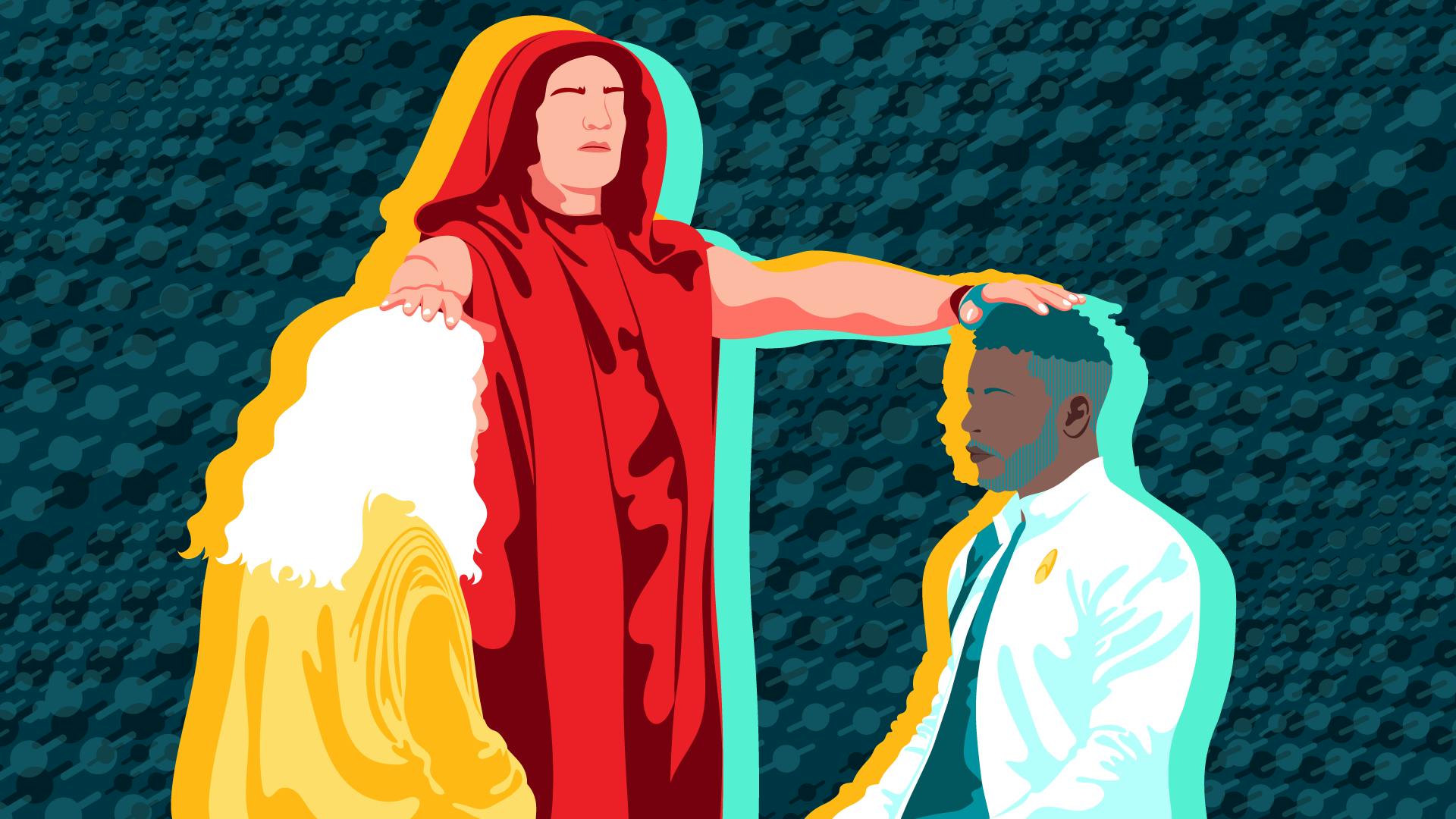
Screen Rant
Star trek's federation knows its genetic engineering ban is wrong.
The Federation's ban on genetic engineering is wrong, and a new Star Trek comic explores why.
Warning; contains spoilers for Star Trek: Strange New Worlds: The Illyrian Engima #1 The ban on genetic engineering in the Star Trek universe is wrong–and the Federation knows it. In IDW Publishing’s new Star Trek: Strange New Worlds: The Illyrian Enigma #1 , the crew deals with the fallout from the show’s season one finale, which saw Number One, who is genetically modified, arrested by Starfleet officials. Now, her crewmates are grappling with what has happened, making it clear this law is unfair, and unjust. The issue is on sale now in print and digital.
Genetic engineering is a crime in the United Federation of Planets, stemming from Khan Noonien Singh and his Augments, genetically modified humans who almost destroyed the Earth. This left a bad taste in humanity’s mouth, resulting in a ban on the practice centuries later. Of course, this has not stopped humans from trying, and genetic modification became a central plot point in not only Star Trek: Deep Space Nine (where the rule was first introduced) but also Star Trek: Into Darkness . Strange New Worlds has picked this plot point up; Una Chin-Riley, AKA Number One, is a genetically modified Illyrian. Una lied on her Starfleet application, omitting that she was Illyrian. When the truth came to light, she was arrested and taken into custody.
Related: Star Trek Announces Release of DS9's "Lost Episode"-The Dog of War
Now, her Enterprise crew mates are grappling with what happened. Uhura, Ortegas and Nurse Chapel are having dinner in the mess hall–and discussing the situation regarding Number One. Uhura calls the situation “complicated,” while Ortegas believes that the ban is “archaic” and a slap in the face to the concepts of diversity and acceptance–pillars upon which the Federation is built. Nurse Chapel explains that the Illyrians are still largely unknown and judging them by Federation standards is unfair. Uhura decides that Starfleet will not listen to them on the matter, so they must make them listen. The issue is written by Kirsten Beyer and Mike Johnson, illustrated by Megan Levens, colored by Charlie Kirchoff and lettered by Neil Uyetake.
The Federation's Ban on Genetics is Reactionary
The Federation’s stance on genetic engineering is a sticky one , arising from a dark chapter in human history. Genetically modified super people did indeed almost destroy Earth; the adage “once bitten, twice shy” applies here. Yet the Federation’s official position on the topic is reactionary, and short-sighted. First, there are species, such as the Illyrians, who practice it on the regular, and it is warp and woof in their culture. Ortegas is correct in that expecting other species to adhere to this rule runs counter to the Federation’s principles of diversity and tolerance; why are other species being punished for the actions of 20th/21st-century humans? Furthermore, what if genetic engineering could save lives? This topic has been explored in various Star Trek shows and novels, particularly with the character of Doctor Julian Bashir from Deep Space Nine. The ban on genetic engineering still persists to the 24th century, meaning the crew of the Enterprise will not convince the Federation to do an about-face. While they will no doubt be successful in eventually freeing Una, the ban will stand.
The topic of genetic engineering in the Star Trek universe is here to stay; not only has Strange New Worlds explored the ramifications of the ban, but Star Trek: Prodigy as well. Both shows have taken nuanced looks at the law, but one thing is clear: the ban is wrong–and the Federation knows it.
Next: Star Trek's New Godlike Species Explained: The Shapers of Sarkadesh
Star Trek: Strange New Worlds: The Illyrian Enigma #1 is on sale now from IDW Publishing!

Giant Freakin Robot
Star Trek's Biggest Plot Twist Decided At The Last Minute
Posted: April 15, 2024 | Last updated: April 16, 2024
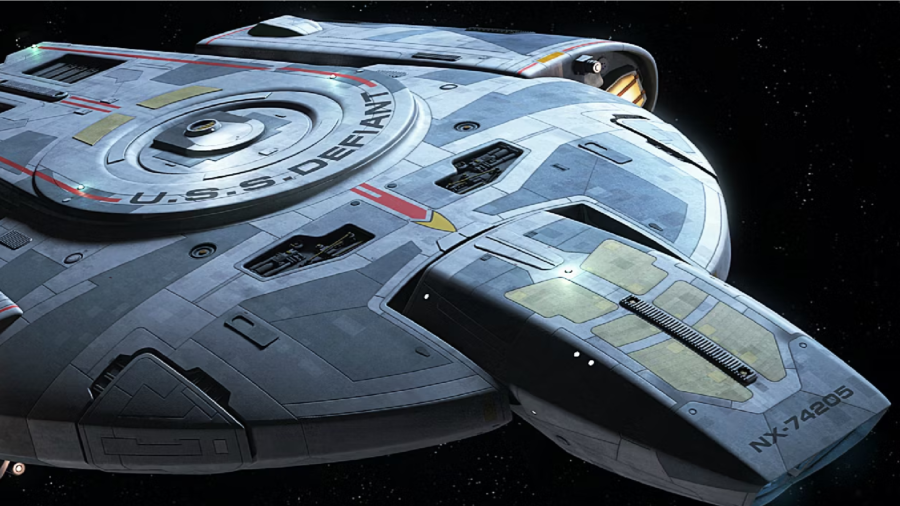
Star Trek’s Biggest Plot Twist Decided At The Last Minute
For fans of Star Trek: Deep Space Nine, the craziest plot twist came in “Doctor Bashir, I Presume,” an episode that revealed that Bashir was genetically enhanced in violation of Federation law. This revelation occurred in the fifth season, and it made many fans naturally curious about whether this was a fact about the good doctor that the writers had kept under wraps for years. In reality, Ronald D. Moore simply needed a dark fact about Bashir’s past life that the visiting Dr. Zimmerman could discover, and that’s why the genetic modification storyline was created.
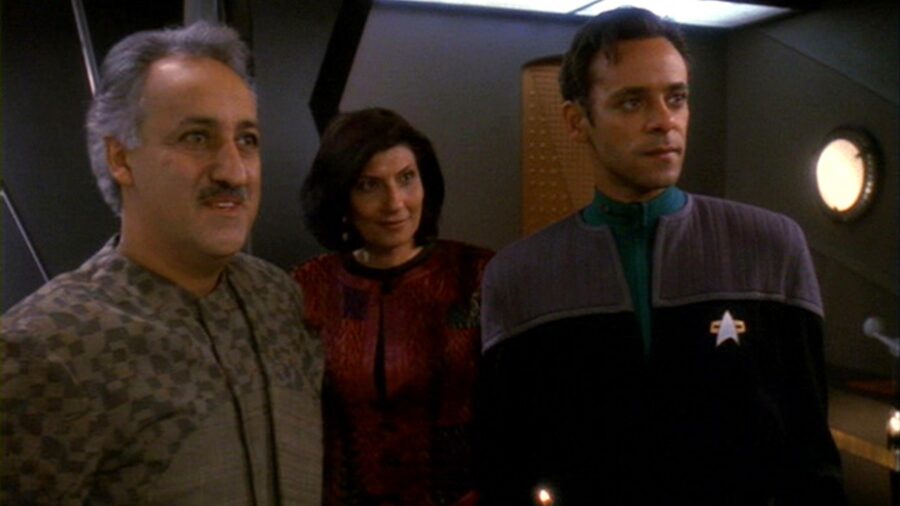

Everything Changed For Doctor Bashir
One of the reasons this Star Trek plot twist was so resonant with fans is that it seemed very much at odds with the characterization of Bashir. The doctor’s characterization had changed a bit over the years (more on this later), but at his heart, he was always presented to audiences as a brilliant young man who liked having fun and flirting with beautiful women. Because of that, a plot point about him having a dark and illegal secret that nearly tore his family apart seemed that much more surprising.

Illegal Genetic Tampering
What did this Star Trek twist tell us about Dr. Bashir, though? We discover that shortly before he was going to turn seven years old, the future doctor’s parents were worried that he was less physically and mentally developed than he should be for his age. The parents took him in for a genetic engineering procedure that turned him into a brilliant prodigy, but the fact that this procedure was completely illegal and that they hid it from him until he was 15 drove a rift between Bashir and his parents.

The Original Augment
Interestingly, the heart of this Star Trek plot twist goes all the way back to The Original Series. In “Space Seed,” we are introduced to Khan Noonien Singh, who led genetically enhanced Augments in trying to take over Earth in an event known as the Eugenics Wars. Khan was originally driven from the planet but became a threat to Kirk and the Enterprise (twice, no less) in the 23rd century, serving as a stark reminder of why the Federation has strict laws against genetical engineering.
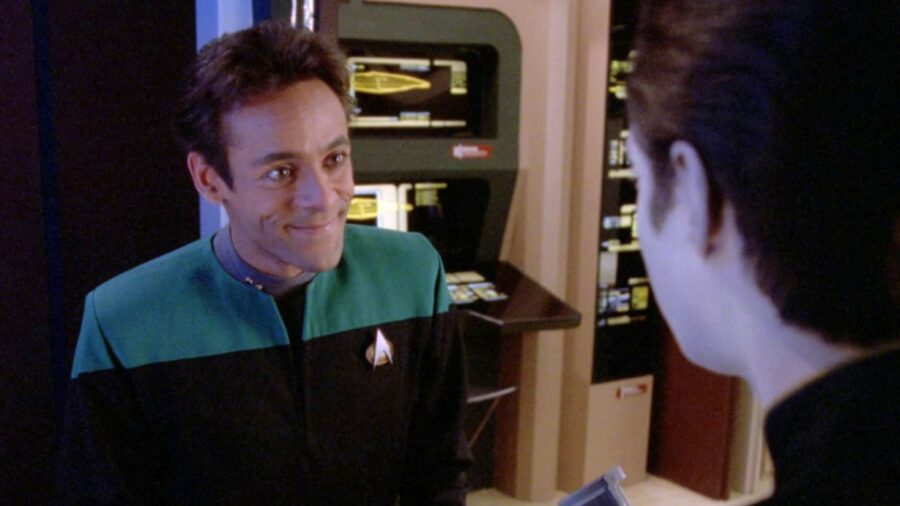
No One Could Agree On Bashir’s Character
Different Star Trek: Deep Space Nine execs had very different feelings regarding this Star Trek plot twist. For example, Ronald D. Moore mentioned how Bashir “had some strange jigs and jags in his profile over the course of the first four seasons,” and hiding a deep secret about his genetically engineered past might retroactively make those stranger moments make sense if he was hiding who he was. In reality, one reason for Bashir’s changing characterization was that audiences hated him in the first season, and the writers subsequently tried to make him more palatable while still giving him an arc–the unlikeable know-it-all who eventually wins everyone over.
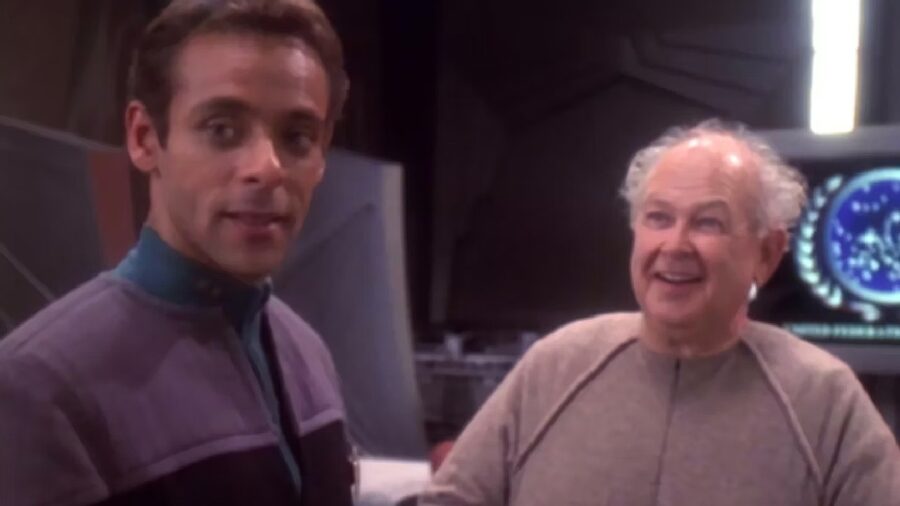
Alexander Siddig’s On-Set Sabotage
Star Trek: Deep Space Nine showrunner Ira Steven Behr was less comfortable with the Bashir twist, later saying that “we’d had to work backward to get it.” He helped usher in episodes like “Statistical Probabilities” that put this major character change into focus, but none of that ever won over Bashir actor Alexander Siddig. He was annoyed at getting a last-minute change to his character in “Doctor Bashir, I Presume” and admitted to later sabotaging certain lines of dialogue whenever he thought the writers were trying to turn his character into a Data-style walking computer.
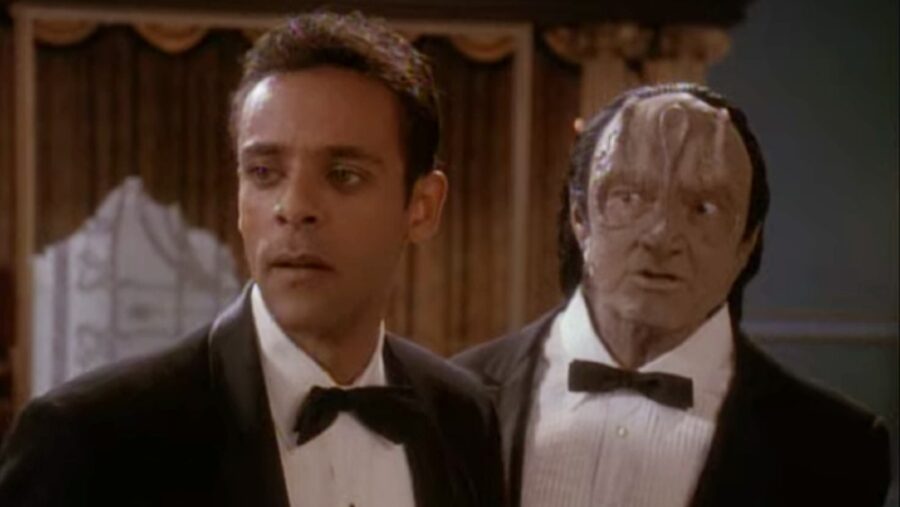
Still One Of Our Favorites
As for me, I find myself half-agreeing with both Star Trek heavyweights Behr and Moore in this matter: like Behr, I think a plot twist this big should be grounded in previous stories and not come out of left field. Like Moore, though, I agree that Bashir’s characterization was all over the place, and this dark twist helped center the character while retroactively explaining some of his strange behavior. Now, I’m left with one big hope for everyone’s favorite genetically engineered doctor: could he please, please get a cameo in that otherwise forgettable-sounding Section 31 movie?
More for You
19 Workplace Norms That Millennials and Gen Z Are Refusing to Accept
James Bond Trailer Featuring Henry Cavill Receives 2.3M Views Despite Being an AI Fake | THR News Video
Kawhi Leonard going viral after underwhelming response to receiving his Olympic jersey
Here’s How Judge Merchan Could Punish Trump If He Disrupts Trial Or Violates Gag Order—Including Imprisonment
8 Places You Should Never Charge Your Phone
The Only Way You Should Store Butter, According to Land O'Lakes
Here’s How Long You Should Walk Every Day to Keep Your Heart Healthy
The Food City Anthony Bourdain Considered One Of His All-Time Favorites
One of the best British spy dramas of all time is finally streaming on Netflix
The Most Visited Attraction in Every US State
Don’t pack these 9 TSA-prohibited items in your checked baggage
I Lost 50lbs With 3 Lifestyle Changes
The Pool Noodle Hack That Makes Spray Painting Cabinet Doors A Breeze
Is It Safe To Grill Frozen Hamburger Patties Straight From The Freezer?
Oklahoma officials tell trans pro wrestler not to compete in their state
The Coolest Car From the Year You Were Born (1945-1995)
How Do I Know If My Dog Is Happy? 12 Signs of a Happy Dog
"I made sure there were four guys between us" - Michael Jordan had no intention of getting into a fistfight with Dave Corzine
Pushups are an efficient, full-body exercise — but don't make this 1 mistake
8 Shoes to Wear with Leggings This Spring That Aren’t Sneakers
share this!
April 17, 2024
This article has been reviewed according to Science X's editorial process and policies . Editors have highlighted the following attributes while ensuring the content's credibility:
fact-checked
reputable news agency
Next up is launch, as Boeing's Starliner takes trek to Cape Canaveral
by Richard Tribou, Orlando Sentinel
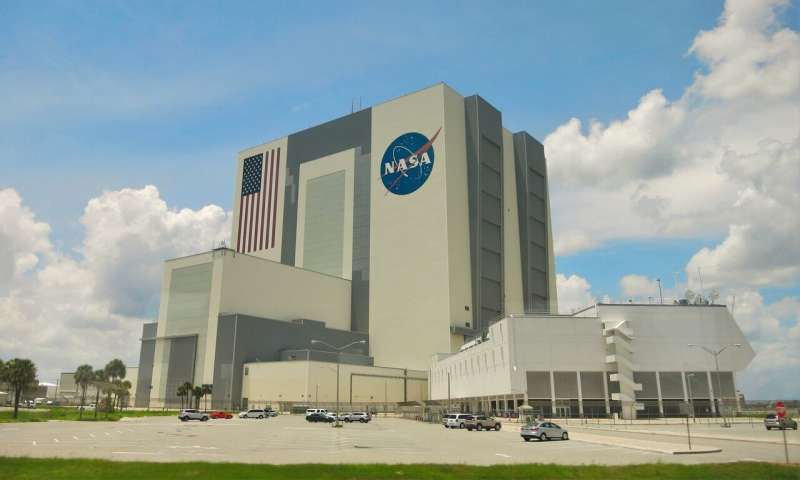
Boeing's CST-100 Starliner, set to take its first humans on board during the Crew Flight Test mission next month, was transported from Boeing's Commercial Crew and Cargo Processing Facility at Kennedy Space Center in Florida on a 10-mile trip to Cape Canaveral Space Force Station.
It arrived at United Launch Alliance's Vertical Integration Facility early Tuesday where it was placed atop an Atlas V rocket ahead of the planned launch from Canaveral's Space Launch Complex 41 as early as May 6. The capsule will take NASA astronauts Butch Wilmore and Suni Williams on a planned eight-day mission to the International Space Station.
Boeing completed fueling its spacecraft at the Starliner production facility adjacent to KSC's massive Vehicle Assembly Building earlier this month.
"Samples were taken and specialized tests were conducted throughout the propellent loading process to ensure the safety of the team performing the operation and the safe operation of the spacecraft on orbit," said Mark Sorensen, Starliner CFT Crew Module lead.
Before it left the building, Boeing performed a final weigh-in that also acted as the center-of-gravity check. Teams signed off on that, and Starliner was loaded by crane atop ULA's transport vehicle called "K-MAG" for the overnight trip between KSC and Canaveral.
Williams and Wilmore were joined by NASA astronauts Mike Fincke and Scott Tingle, Canadian Space Agency astronaut Joshua Kutryk and JAXA astronaut Yui Kimiya to see Starliner off.
Fincke, Tingle and Kutryk have all been announced as the crew of Starliner's next planned mission, Starliner-1, while Kimiya is assigned for a long-duration stay on board the ISS in 2025, so could become its fourth crew member.
Starliner is the second of two spacecraft created as part of NASA's Commercial Crew Program alongside SpaceX's Crew Dragon. SpaceX completed its first test crew mission back in 2020 and has since flown what is now a fleet of four Crew Dragons an additional 12 times on both private and NASA missions carrying 50 humans into space in the last four years.
Boeing has faced a series of delays highlighted by an uncrewed test flight in December 2019 that failed to rendezvous with the ISS, forcing the company to refly its uncrewed dry run before it set up for the human test flight. The second try went well, but it took 2.5 years to get there in May 2022. Further fixes were also needed to the spacecraft, which have pushed CFT an additional two years past the last time it flew.
But everything is now queued up for the final push to space. The Atlas V rocket has been onsite since February, and ULA completed its CFT Mission Success Review earlier in April.
"Doing everything thing we can to give Butch and Suni a boring trip to ISS on the Atlas," said ULA President and CEO Tory Bruno on X.
If all goes well with CFT, the first operational mission Starliner-1 could fly as early as February 2025.
While SpaceX is in the middle of its eighth operational flight, Crew-8, with Crew-9 slated for August, once Boeing's Starliner is certified, the two companies will trade off flights to the ISS so each makes only one trip there annually.
Boeing has six operational flights to the ISS under contract, so it can support rotational crew missions through 2030, when NASA has said it plans to begin decommissioning the ISS.
2024 Orlando Sentinel. Distributed by Tribune Content Agency, LLC.
Explore further
Feedback to editors

Unraveling the mysteries of consecutive atmospheric river events
50 minutes ago

Research team resolves decades-long problem in microscopy
51 minutes ago

RNA's hidden potential: New study unveils its role in early life and future bioengineering

Smoother surfaces make for better accelerators

Scientists reveal hydroclimatic changes on multiple timescales in Central Asia over the past 7,800 years

Research reveals a surprising topological reversal in quantum systems
2 hours ago

NASA's Juno gives aerial views of mountain and lava lake on Io

Toxic fireproof chemicals can be absorbed through touch, 3D-printed skin model shows

Skyrmions move at record speeds: A step towards the computing of the future
3 hours ago

A third of China's urban population at risk of city sinking, new satellite data shows
Relevant physicsforums posts, orientation of the earth, sun and solar system in the milky way.
6 hours ago
The linear polarization and brightness of pulsars
9 hours ago
Will we ever communicate with extraterrestial life in a reasonable time frame?
11 hours ago
Recommendations for International Research Competitions
17 hours ago
Our Beautiful Universe - Photos and Videos
Apr 17, 2024
Where Are the Missing Black Holes in the Milky Way?
Apr 16, 2024
More from Astronomy and Astrophysics
Related Stories

Boeing 1 month out from 4 years of catchup to SpaceX with 1st crewed Starliner flight
Apr 4, 2024

NASA, Boeing aiming for July launch of Starliner space capsule
Mar 29, 2023

Astronaut chooses daughter's wedding over space test flight
Oct 7, 2020

NASA replaces astronaut on Boeing's 1st crew launch
Jan 23, 2019
First manned flight of Boeing Starliner delayed until April
Nov 4, 2022

More delays for Boeing's new space capsule for astronauts
Apr 3, 2019
Recommended for you

'Tube map' around planets and moons made possible by knot theory

NASA's Ingenuity Mars helicopter team says goodbye—for now

NASA confirms mystery object that crashed through roof of Florida home came from space station

NASA is seeking a faster, cheaper way to bring Mars samples to Earth

NASA unveils probe bound for Jupiter's possibly life-sustaining moon
Apr 12, 2024

A new type of seismic sensor to detect moonquakes
Let us know if there is a problem with our content.
Use this form if you have come across a typo, inaccuracy or would like to send an edit request for the content on this page. For general inquiries, please use our contact form . For general feedback, use the public comments section below (please adhere to guidelines ).
Please select the most appropriate category to facilitate processing of your request
Thank you for taking time to provide your feedback to the editors.
Your feedback is important to us. However, we do not guarantee individual replies due to the high volume of messages.
E-mail the story
Your email address is used only to let the recipient know who sent the email. Neither your address nor the recipient's address will be used for any other purpose. The information you enter will appear in your e-mail message and is not retained by Phys.org in any form.
Newsletter sign up
Get weekly and/or daily updates delivered to your inbox. You can unsubscribe at any time and we'll never share your details to third parties.
More information Privacy policy
Donate and enjoy an ad-free experience
We keep our content available to everyone. Consider supporting Science X's mission by getting a premium account.
E-mail newsletter

IMAGES
VIDEO
COMMENTS
A portrait of Khan Noonien Singh, a man who was a product of genetic engineering. Genetic engineering, genetic programming, or genetic manipulation was a process in which the DNA of an organism was selectively altered through artificial means. Genetic engineering was often used to produce "custom" organisms, such as for agricultural or medical purposes, as well as to produce biogenic weapons.
The term augment was used to describe a group of genetically-engineered Humans created by advances in DNA resequencing in the late 20th century. In the 22nd century, Klingons created their own Augments using the original augmented Human DNA. Analogous terms included superhuman and superman. (Star Trek Into Darkness; TOS: "Space Seed"; DS9: "Doctor Bashir, I Presume", "The Sound of Her Voice ...
Genetic engineering plays a huge role in the latest Star Trek: Strange New Worlds episode, "Ghosts of Illyria.". The Illyrians are not a part of the Federation due to their genetic engineering, but they are a friendly species. However, in a dramatic moment, Una reveals she is Illyrian, and the reason that she is immune to the virus ...
(Star Trek Into Darkness) He was the product of a selective breeding or genetic engineering program called Project Khan, based on the eugenic philosophy that held improving the capabilities of a man improved the entire Human race. Augments produced by the program possessed physical strength and analytical capabilities considerably superior to ...
The writers of Star Trek hadn't dared to even address the ideas of genetic engineering seriously until the character of Julian Bashir was created and the idea was a THROWAWAY, something added to the script at the last moment, supposedly to give Bashir a secret to be discovered in the episode Dr. Bashir, I Presume.
As genetic engineering looks to play a big role in Strange New Worlds, here is how it has been handled in past Star Trek shows. In the latest episode of Strange New Worlds , it is revealed that first officer Una Chin-Riley (Rebecca Romijn) is an Illyrian, a species of alien that is banned from joining the Federation due to their practice of ...
Una on trial in Star Trek Strange New Worlds, season 2 episode 2 (Ad Astra per Aspera). (Image credit: Paramount) It's not so much the Illyrian people as their penchant for genetic modification, a ...
In fact, the very name "Khan" has become synonymous with genetic engineering in science fiction. Star Trek often highlights ethical issues with the abuse of biotechnology, prompting fans to ...
Genetic engineering is a fascinating subject in Star Trek history and it links Star Trek: The Original Series' Khan Noonien Singh (Ricardo Montalban) with the creation of Star Trek: Deep Space Nine's Dr. Julian Bashir (Alexander Siddig). Due to the tragedies in Earth's 20th-century history and the crimes of Augments like Khan, genetic engineering is illegal in the United Federation of Planets ...
Star Trek has not given an exact date for when the Federation banned genetic engineering, but a line from Star Trek: Enterprise season 4, episode 15, "Affliction," states the ban was established "decades" before 2154. This would place the ban well before the timeline of Star Trek: The Next Generation. While TNG's "Unnatural Selection" seems to ...
"Star Trek" has often featured stories about genetic engineering, and Season 2, Episode 2 of "Strange New Worlds" brings the focus back to this topic.
Genetic engineering doesn't make you a villain. When "Space Seed" aired during Star Trek's first season in 1967, the show was still making up its future history. Even the year The Original ...
In the first episode of Strange New Worlds (creatively named "Strange New Worlds"), Nurse Chapel performs genetic alterations on the members of a landing par...
Chief Medical Officer. Portrayed by. Alexander Siddig. Born on Earth in the mid-24th century, Dr. Julian Bashir's life story is a fascinating exploration of genetic engineering, moral dilemmas ...
Both "Space Seed" and Star Trek II: The Wrath of Khan give the dating of the Eugenics Wars as the 1990s. At one point during that decade in reality, Ronald D. Moore and René Echevarria had a discussion in which they observed it as odd that the Eugenics Wars seemed to basically be the only evidence of genetic engineering in Star Trek.
In the episode "Space Seed," Star Trek revealed that great progress in genetic engineering in the late 20th century occurred. Eventually, a group of genetically engineered people, led by Khan ...
* "Borderland" - This Star Trek: Enterprise episode discusses genetic engineering, Augments, and how the Eugenics Wars affected Earth. ** "The Return of the Archons" - The Prime Directive, first referenced in this Original Series episode, is clear — Starfleet is not to interfere with the development of a culture that is living and growing ...
Question about genetic engineering in SNW. I should preface this with the fact that Strange New Worlds is the first Star Trek show I have watched. So, my knowledge is coming mostly from that and the few (maybe 5) episodes of TNG I have seen in my life. In episode 3 of SNW, My question is about episode 1 of SNW in which Pike, Spock and La'an ...
When Star Trek references the Eugenics Wars they are evoking common racist ideologies which the writers in the 60s would've seen first hand. In the first half of the twentieth century eugenics, or the idea that society could be improved by promoting certain traits, was a growing idea. ... When writers used the term "genetic engineering" in the ...
Warning; contains spoilers for Star Trek: Strange New Worlds: The Illyrian Engima #1 The ban on genetic engineering in the Star Trek universe is wrong-and the Federation knows it. In IDW Publishing's new Star Trek: Strange New Worlds: The Illyrian Enigma #1, the crew deals with the fallout from the show's season one finale, which saw Number One, who is genetically modified, arrested by ...
Yep, Genetic Engineering in and of itself is not illegal in the Federation. DNA resequencing for any reason other than repairing serious birth defects is illegal. Any genetically enhanced human being is barred from serving in Starfleet or practising medicine. Deep Space Nine, "Doctor Bashir, I presume". Doctor: Yes.
For fans of Star Trek: Deep Space Nine, the craziest plot twist came in "Doctor Bashir, I Presume," an episode that revealed that Bashir was genetically enhanced in violation of Federation law.
ChatGPT can create virtual worlds. In Star Trek: The Next Generation, Captain Picard and the crew of the U.S.S. Enterprise used the holodeck to generate realistic 3D environments where they could ...
Boeing has faced a series of delays highlighted by an uncrewed test flight in December 2019 that failed to rendezvous with the ISS, forcing the company to refly its uncrewed dry run before it set ...